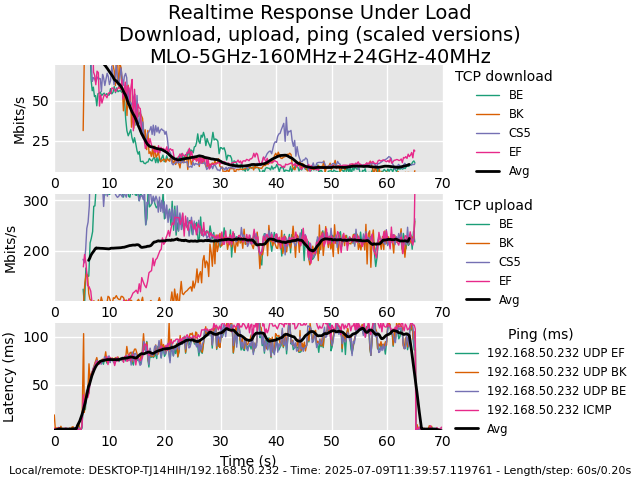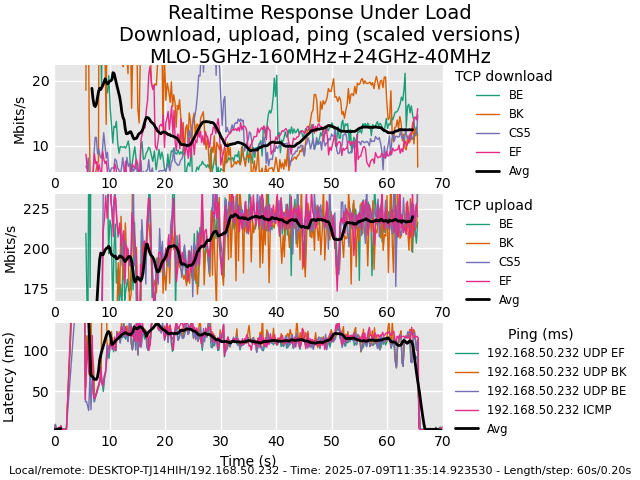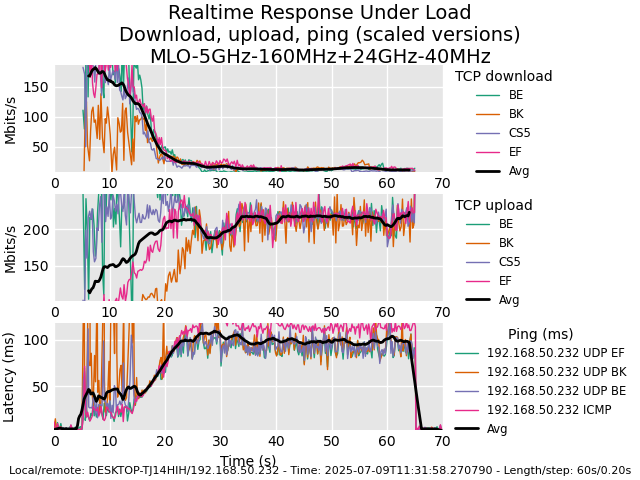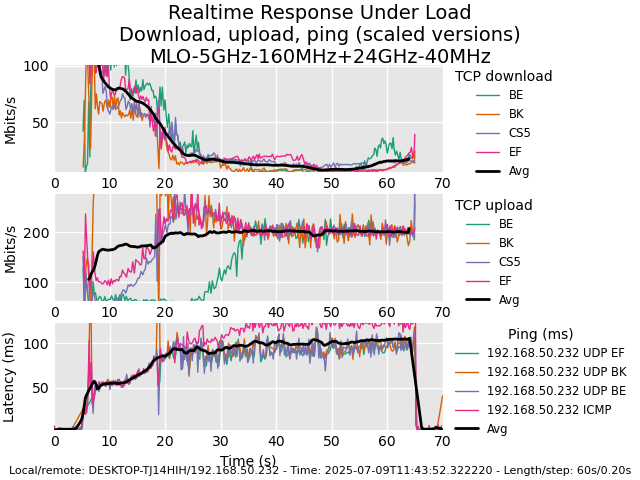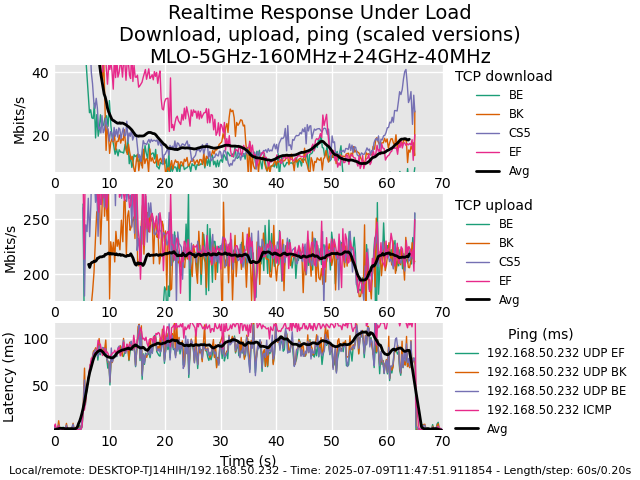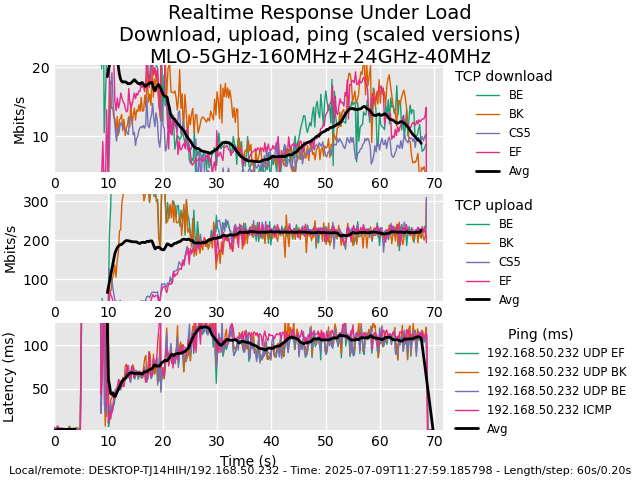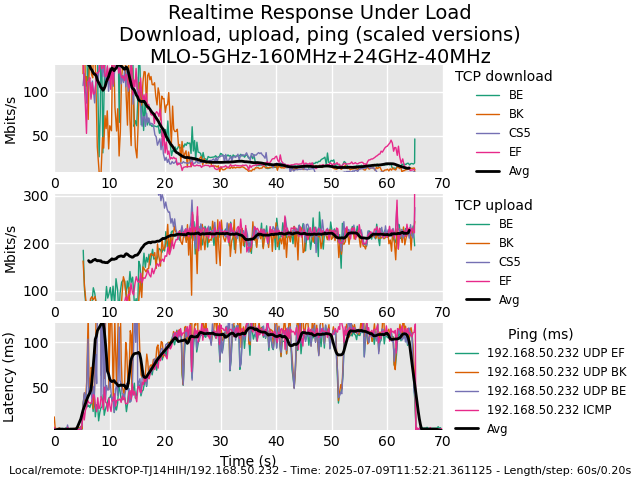The EnGenius ECW516L arrives a year after the flagship ECW536 hit the market and it does have a different role than to solely showcase technological development. It’s trying to make WiFi 7 affordable for anyone willing to adopt this still fairly young standard. A goal that’s also the focus of Zyxel with its NWA110BE. But the EnGenius Cloud Lite ECW516L does things a bit differently.
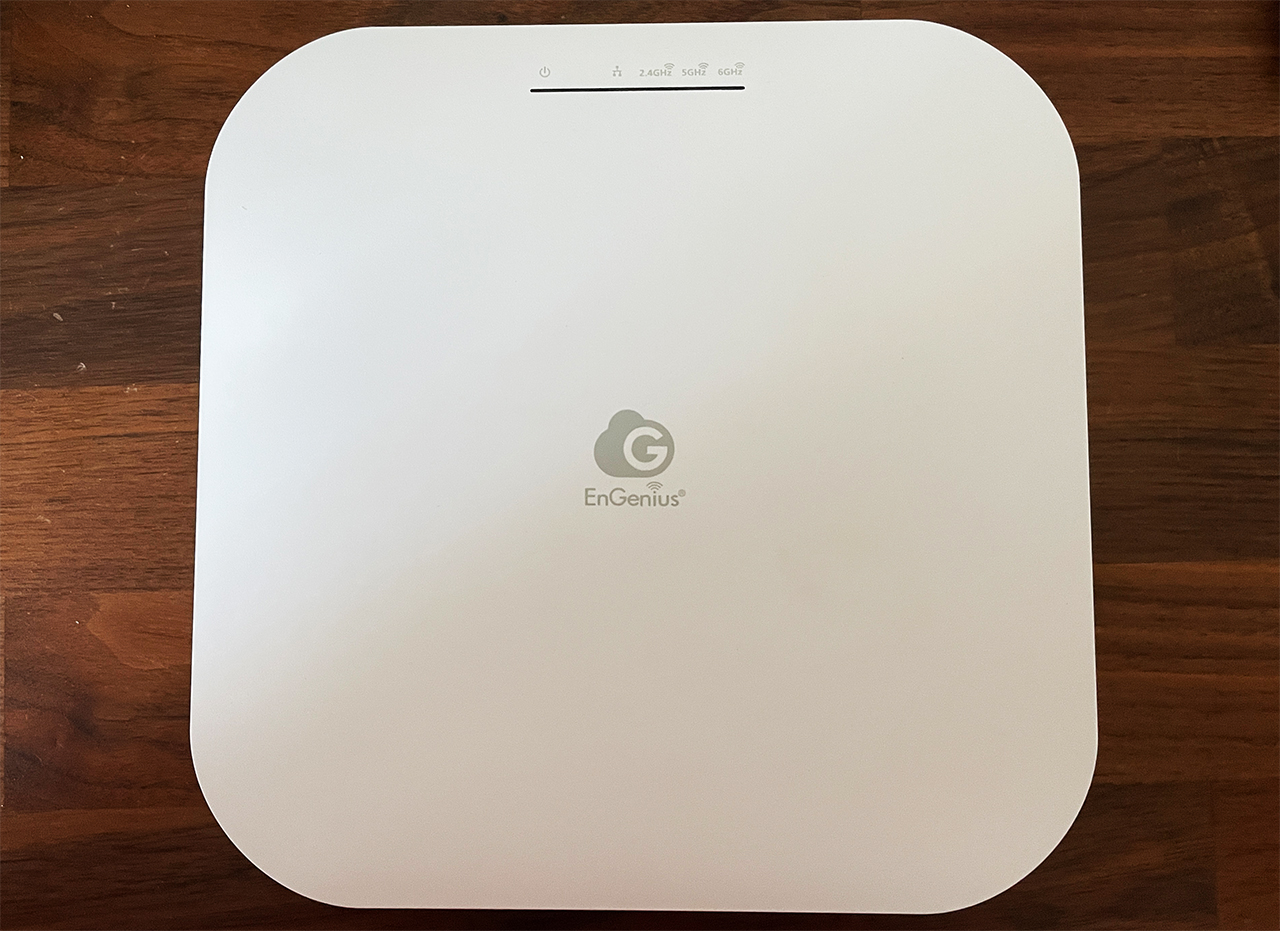
We do get a 2.5GbE port, support for 320MHz channel width on the 6GHz radio and, of course, we do get a tri-band configuration. But what’s different from the NWA110BE is that you can use both the 5GHz and the 6GHz radios at the same time, no need to choose between them. Oh, and there is support for MLO which was and still is to a certain extend a sought after feature that’s particular to the WiFi 7 access points. Now let’s talk about the price.
| EnGenius ECW516L | |
|---|---|
| Zyxel.com | Check Device |
The EnGenius Cloud Lite ECW516L has an MSRP of $199 which is fairly low considering the specifications, but it does have the TP-Link EAP773 breathing down its neck, so I am curious to see the performance of this new WiFi access point. Let’s put it to the test.
The Design and Build Quality
Design-wise, while retaining the core elements of the ECW536, the ECW516L is closer to the ECW230 and ECW230S. The case is smaller, with a plastic top and a metallic bottom. It’s also much slimmer than the ECW536, so it will be a bit more unobtrusive on the ceiling.

And yes, this is a ceiling-mount-only WiFi 7 access point, it won’t sit properly on the desk. You do get the bracket in the package, but not much else. A separate PoE adapter or PoE switch is necessary, although the latter is not mandatory considering that the device does have a 12V DC port available. It’s positioned next to the single 2.5GbE Ethernet port that does support PoE, obviously. And there is also a Reset button as well.
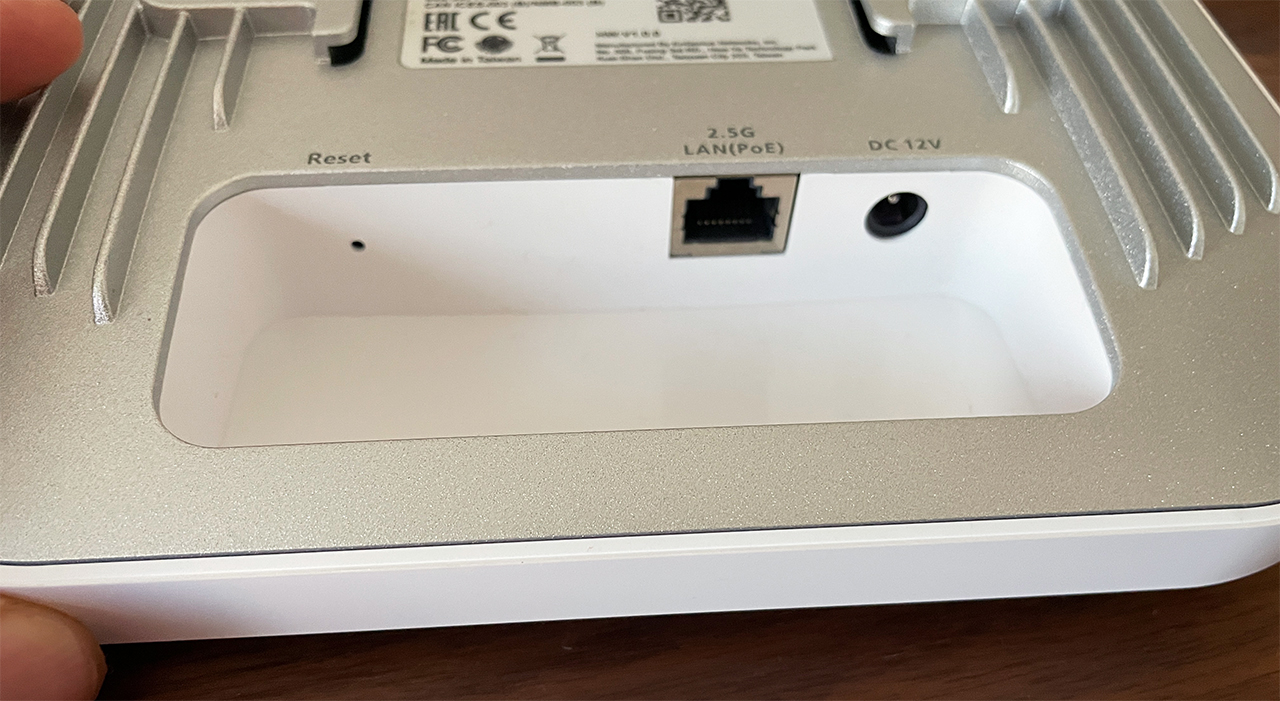
All these can be found within the bottom-placed dedicated area. Flip the device back to the top and we can see a return to the multiple LED ports which is a welcomed change from the single-LED system of the ECW536.
The Thermal Management
The metallic bottom part paired with the plastic top have been a fairly reliable system used by EnGenius over the past years and I was curious whether it worked well for the Cloud Lite ECW516L as well. I didn’t have the AGM phone available this time, so I switched to a small Xinfrared module for an Android phone. And you can see what I was able to capture here.
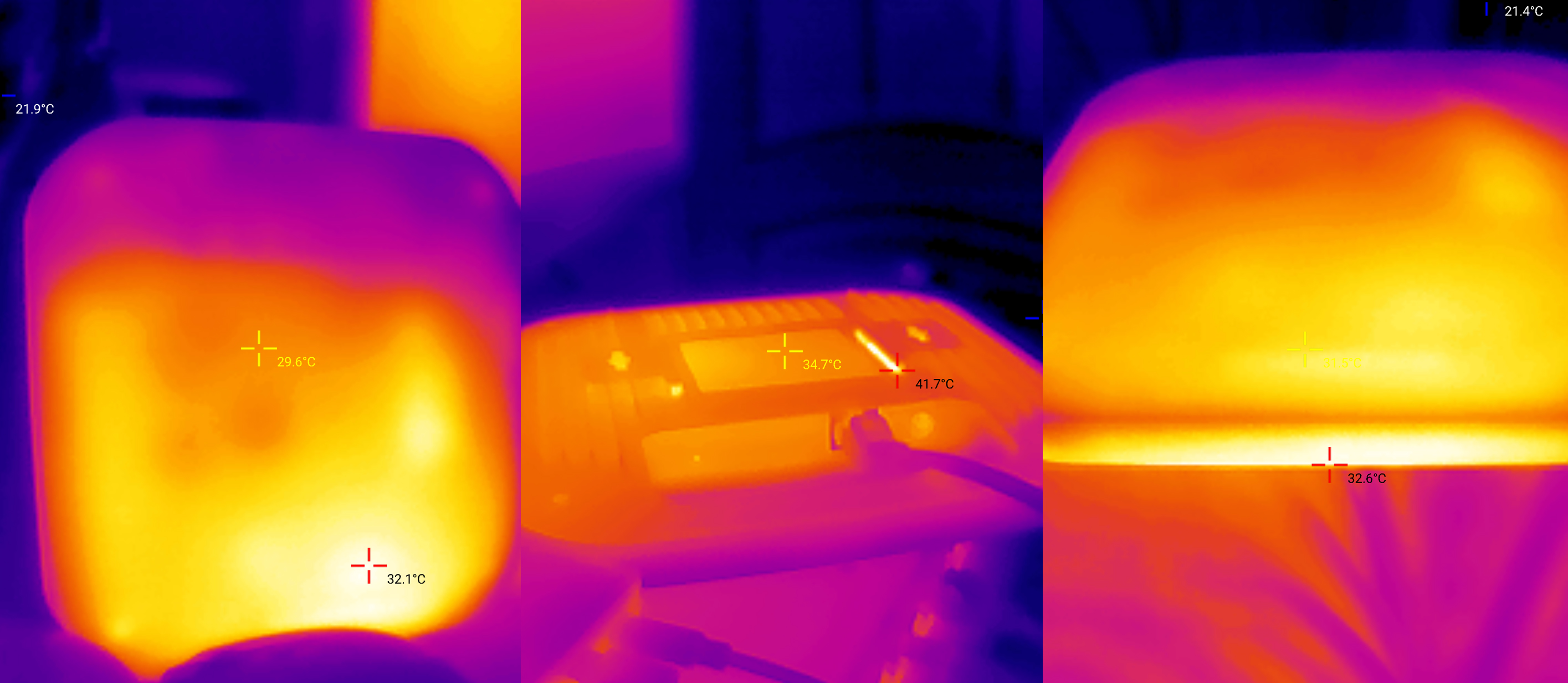
The results are good, since the access point has a very good heat distribution and there doesn’t seem to be any signs that it may overheat or throttle due to high temperature.
EnGenius Cloud Lite ECW516L Teardown
EnGenius has pretty much always made the teardown process as easy as possible and that’s true for the ECW512L where I only needed to remove four screws in order for the plastic part to pop out. And then we are greeted by the rear side of the PCB and EnGenius decided to put here the antenna connectors.
Before anything else, I decided to detach them and then I checked underneath the three aluminum covers. No major component here, so let’s check the other side. I could immediately see the two flash storage chipsets, one was a 256MB NAND flash MXIC X241952 MX35LF2GE4AD-Z43 chip and the other a 128MB serial NOR flash Winbond 25Q128JVSQ 2251 chip. Now we need to remove the rest of the aluminum covers to expose the main components. And you can see in the following table what I was able to identify.
Hardware Comparison
| TP-Link EAP773 | EnGenius ECW516L | Zyxel NWA130BE | Zyxel NWA110BE | |
| CPU | quad-core 1.5GHz Qualcomm IPQ9554 (A73) | tri-core 1.8GHz Mediatek MT988DV (A73) | quad-core 1.5GHz Qualcomm IPQ5322 (Cortex-A53) | quad-core 1.5GHz Qualcomm IPQ5322 (Cortex-A53) |
| RAM | 2GB DDR4 (2x 3KR75 D8BPK) | 1GB DDR4 SDRAM Nanya NT5AD512M16C4-JR 222801NOEF | 1GB Micron 3UR77 D8BPK (DDR4) | 1GB Micron (41R77 D8BPK) DDR4 |
| Storage | 128MB NAND Winbond 24N01GWZEIG | 256MB NAND MXIC X241952 MX35LF2GE4AD-Z43/ 128MB serial NOR Winbond 25Q128JVSQ 2251 | 512MB (MXIC X233662 MX35UF46E4AD-241)/ 16MB NOR flash (MXIC MX25U12832F) | 256MB NAND Winbond 25N02KWZEIR |
| Switch | Marvell AQrate AQR113C Gen4 PHY | Mediatek MT7995AV | Qualcomm QCA8385 Ethernet PHY | Qualcomm QCA8385 Ethernet PHY |
| 6GHz Radio | Qualcomm QCN6274 802.11be 4×4:4 | Mediatek MT7976QN2415-BWELBPTA4836 3×3 | Qualcomm QCN6274 802.11be 2×2:2 | Qualcomm QCN6274 802.11be /td> |
| 5GHz Radio | Qualcomm QCN6274 802.11a/b/g/n/ac/ax 3×3 | Mediatek MT7976QN2415-BWELBPTA4836 4×4:4 | Qualcomm QCN6274 802.11be 2×2:2 | Qualcomm QCN6274 802.11be |
| 2.4GHz Radio | Qualcomm QCN5024 802.11b/g/n/ax 2×2 | Mediatek MT7977IAN 802.11b/g/n/ax 2×2:2 | Qualcomm IPQ5322 802.11b/g/n/ax 2×2:2 | Qualcomm IPQ5322 802.11b/g/n/ax 2×2:2 |
Single Client Tests (6GHz & 5GHz)
I admit I was getting accustomed to see values closer to 2Gbps, so seeing that the EnGenius ECW516L only got above 1Gbps very near the client device was a bit of a letdown. I have also included the values collected when the 6GHz radio was using either the 160MHz and the 320MHz, and we can see that going close to that 21m or 70 feet mark dropped the connection completely.
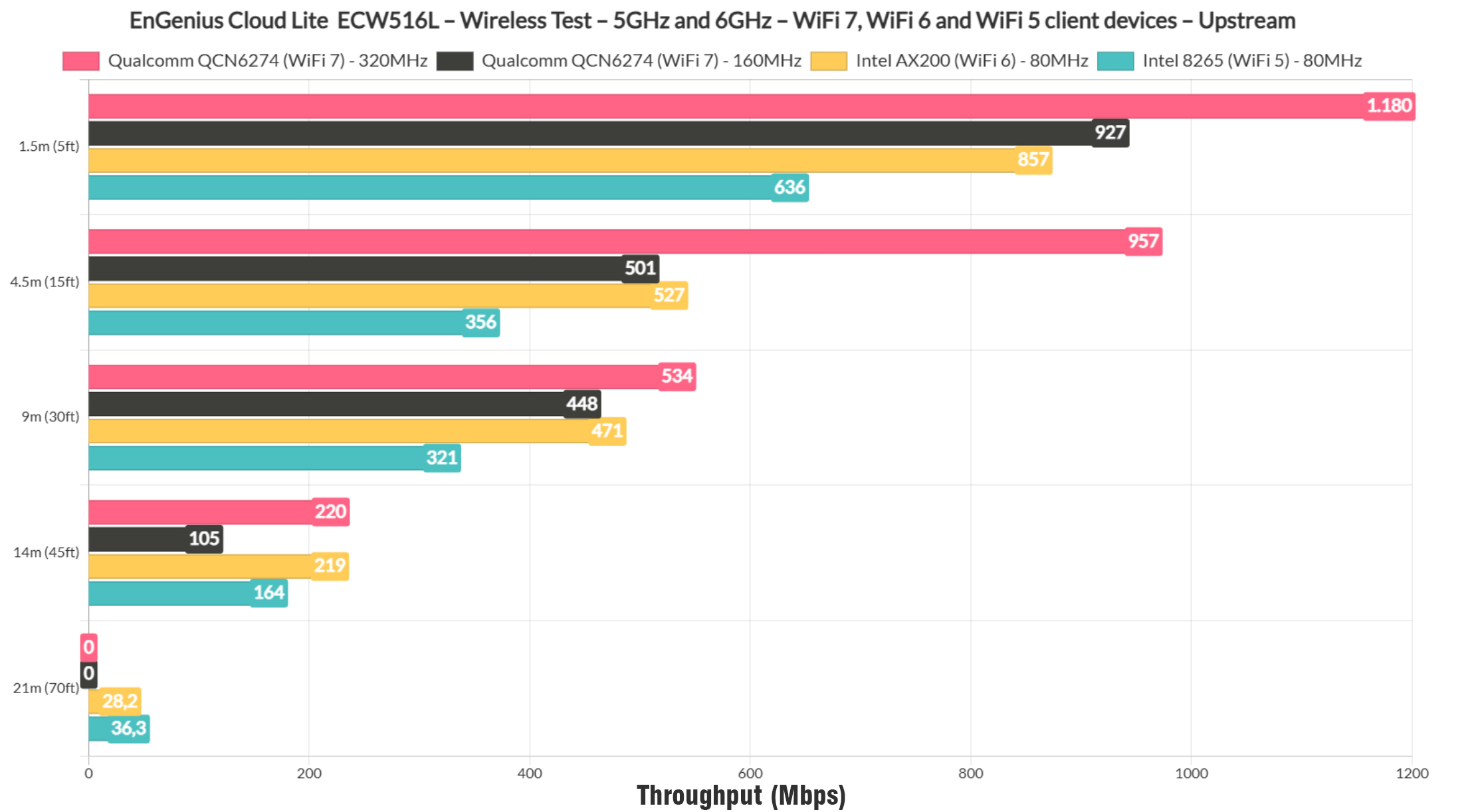
And that true both upstream and downstream. Using the 5GHz radio and relying on a WiFi 6 and one WiFi 5 client device did show that the signal can reach farther.
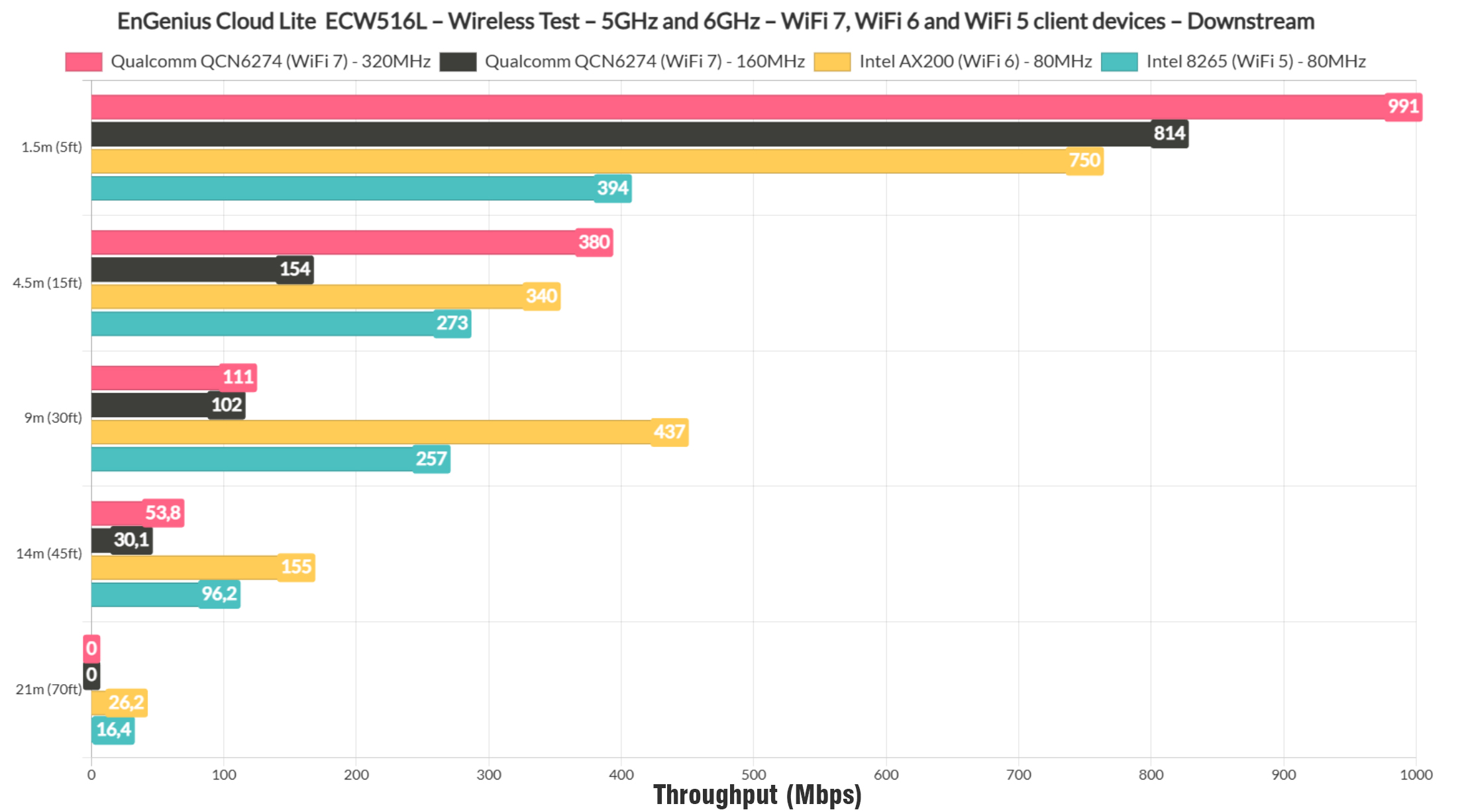
This is confirmed by the signal attenuation graphics as well.
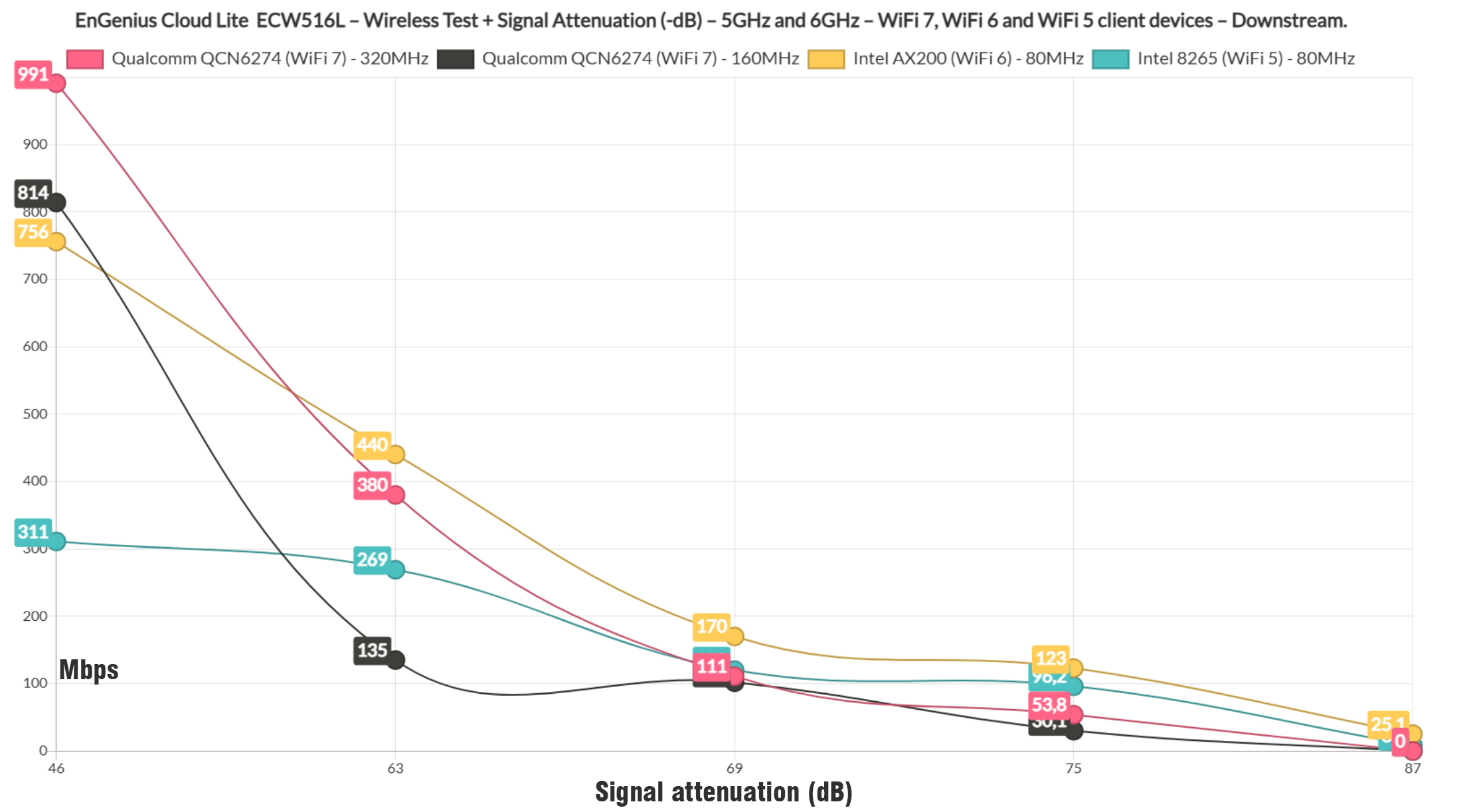
And yes, I am talking about it being both upstream and downstream.
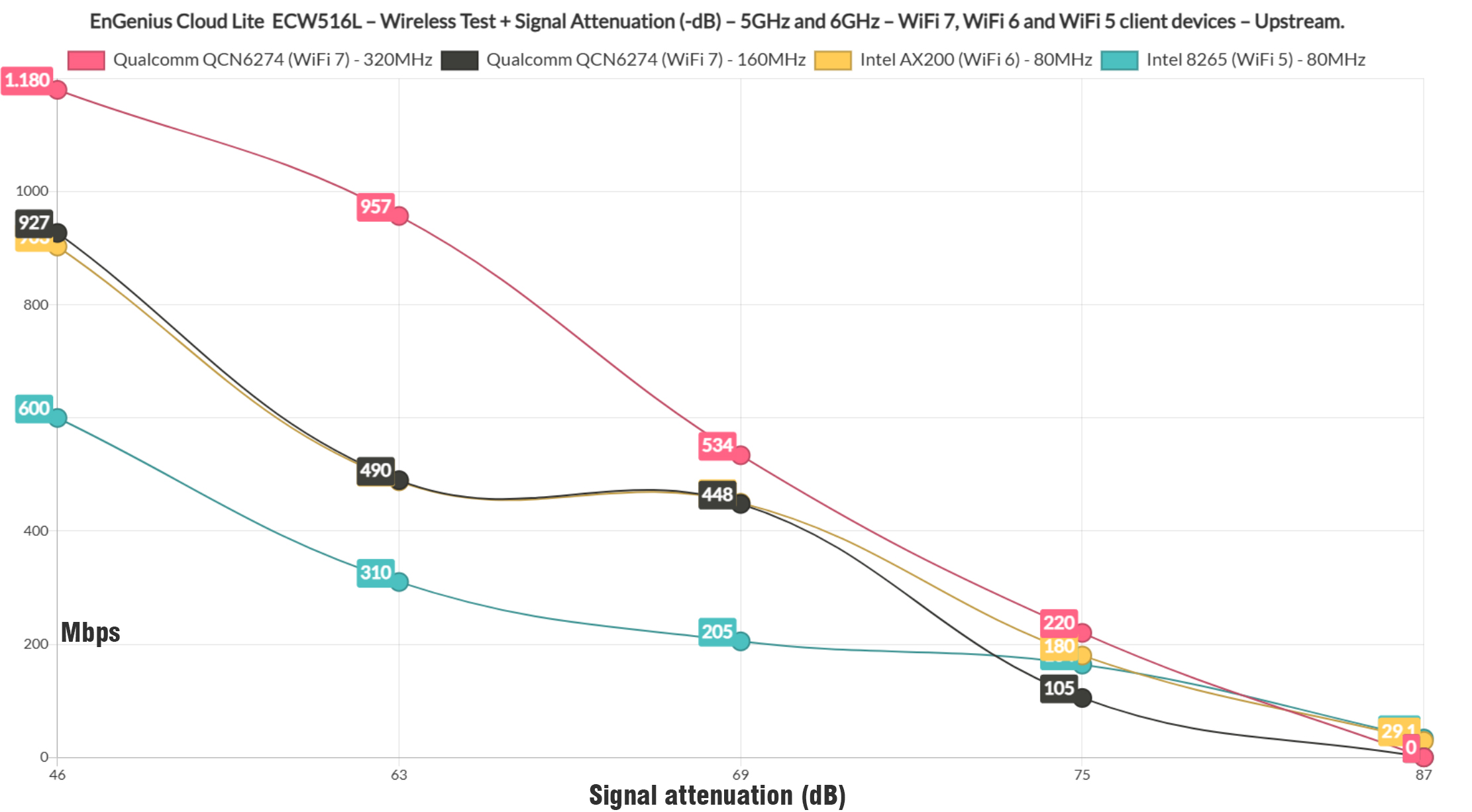
The only mention that I need to make is that the 5GHz radio does not support the 160MHz channel bandwidth, but it’s limited to only the 80MHz width. I mean, in a crowded environment, you’re not going to be able to use the 160MHz channel width, but if you have fewer neighbors and less interference, then this is a feature that you’re going to notice that it’s missing.
OK, now let’s see how the access point fares when put next to other devices.
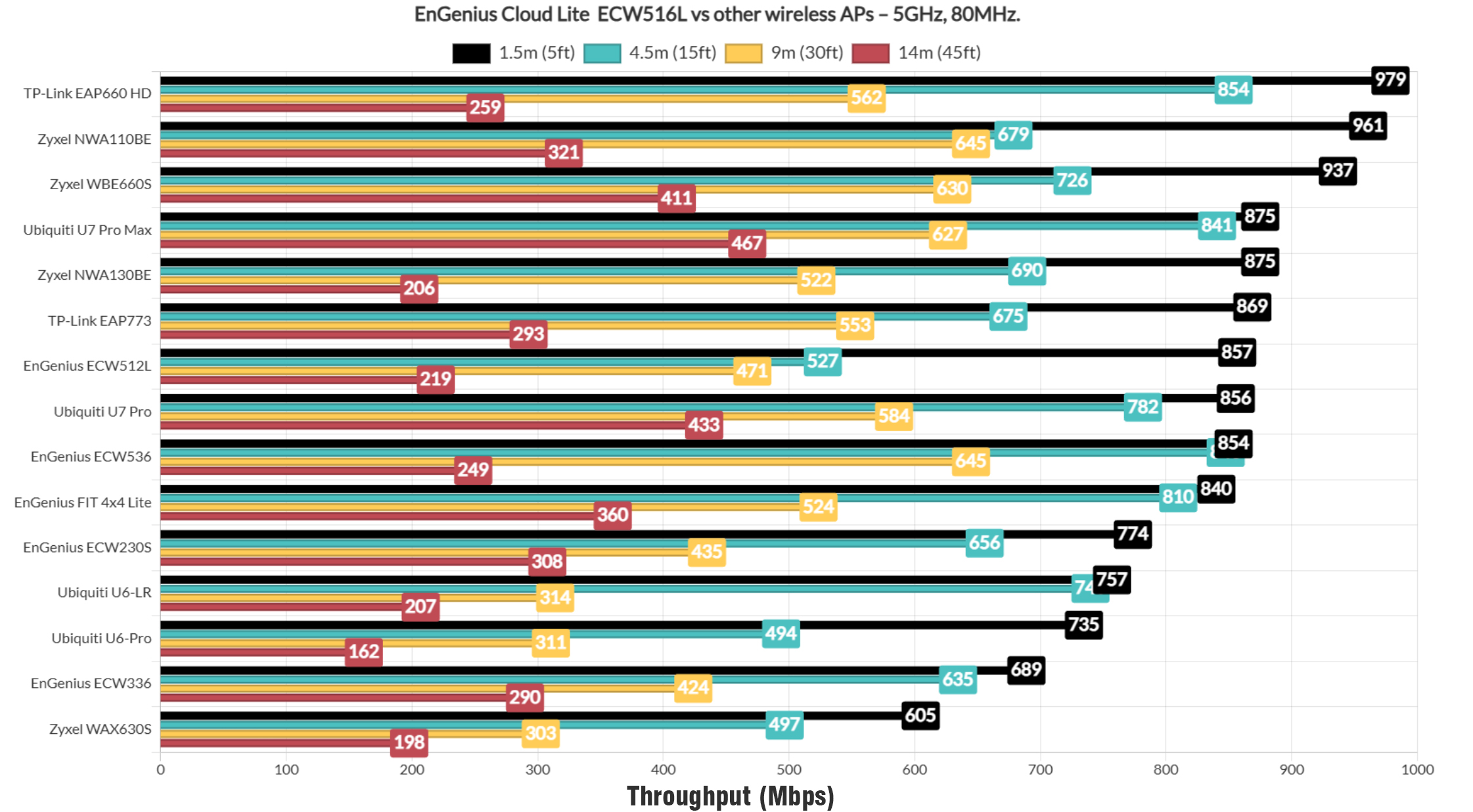
When using the 5GHz radio, we can see that the ECW512L sits above the U7 Pro and immediately below the TP-Link EAP773. Fair performance.
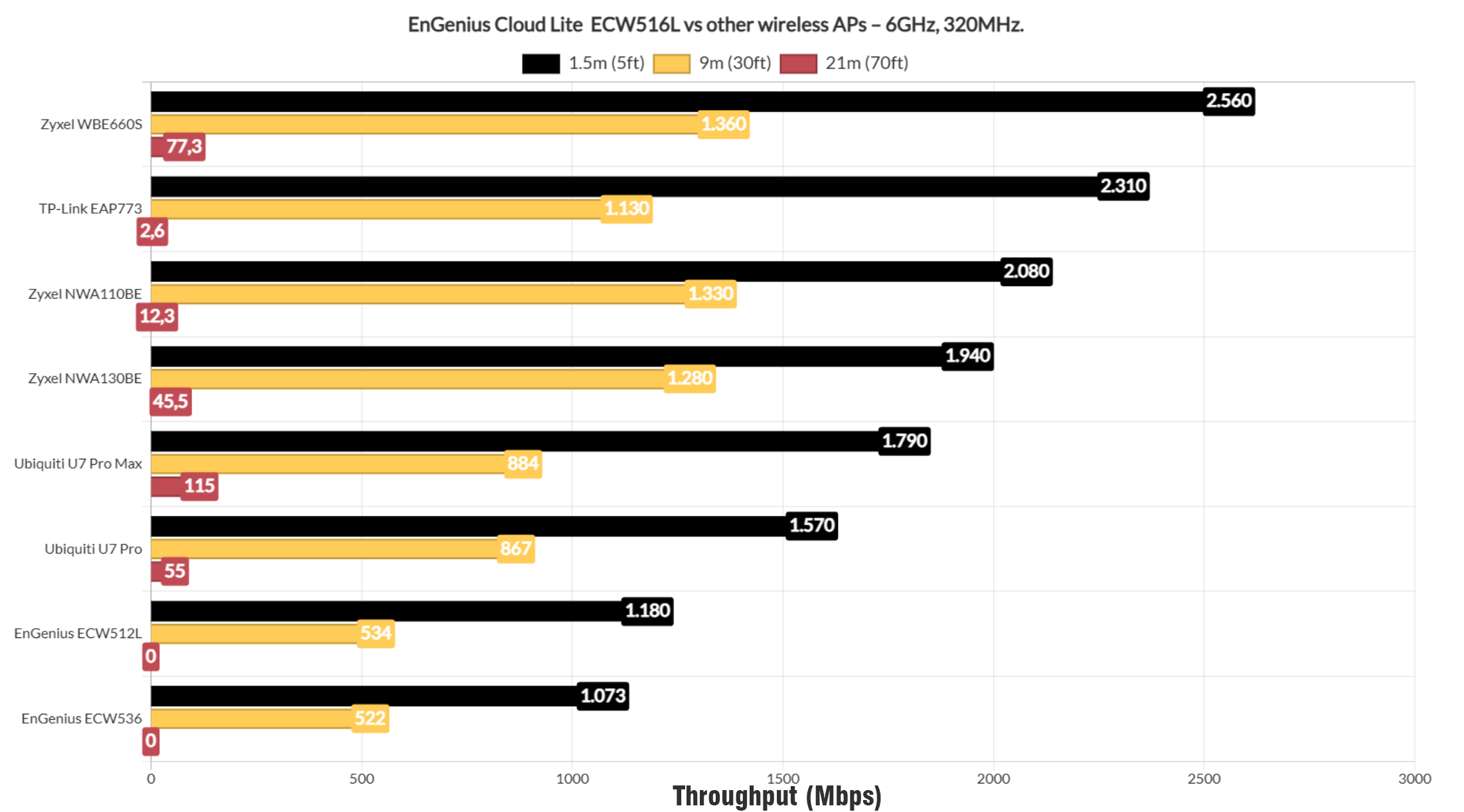
Next, using the 6GHz radio, 320MHz, the ECW516L does take a lower place, only above the ECW536. I have also included a longer-term performance graphic just for funsies.
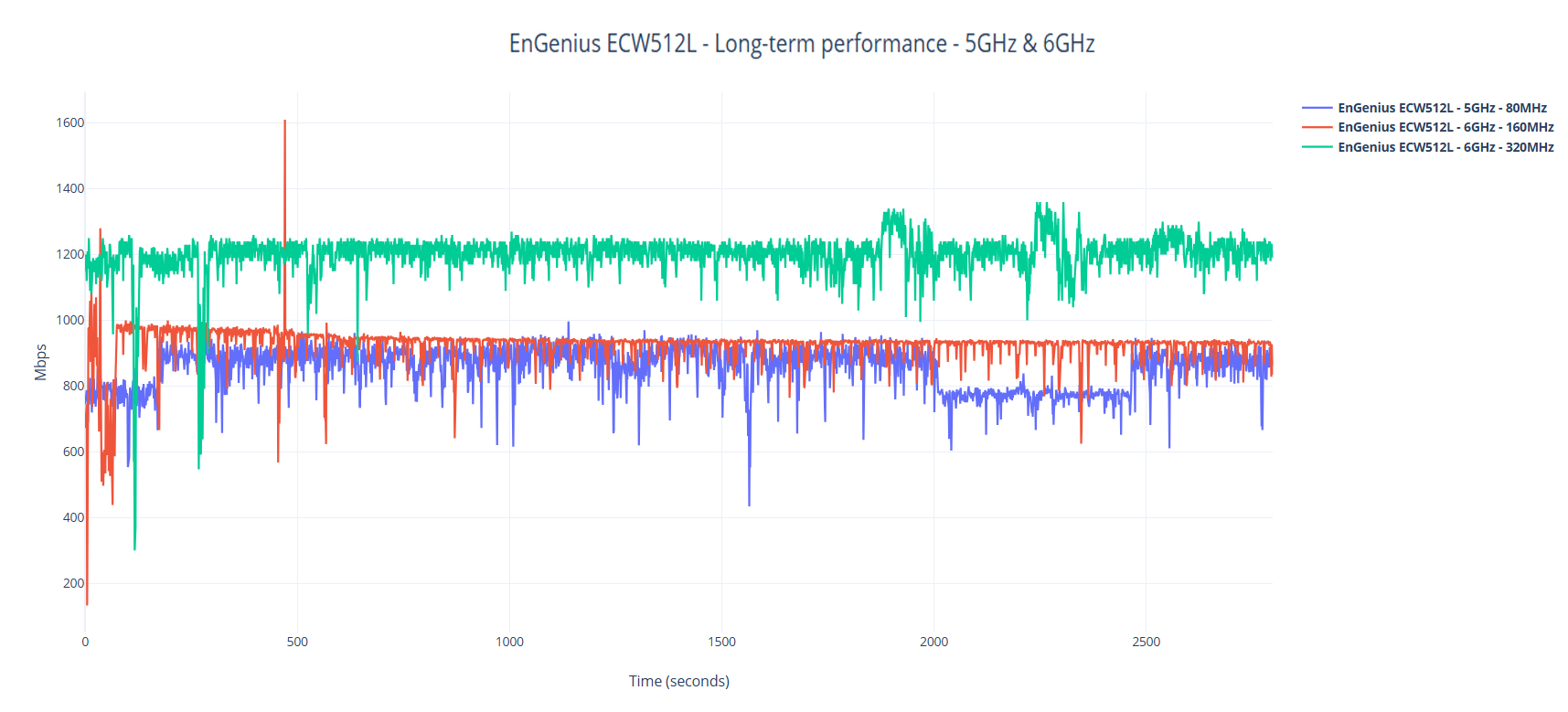
Single Client Tests (2.4GHz)
We’re not going to move past the 2.4GHz radio performance, but I will only be using a couple of clients and just the upstream graphic.
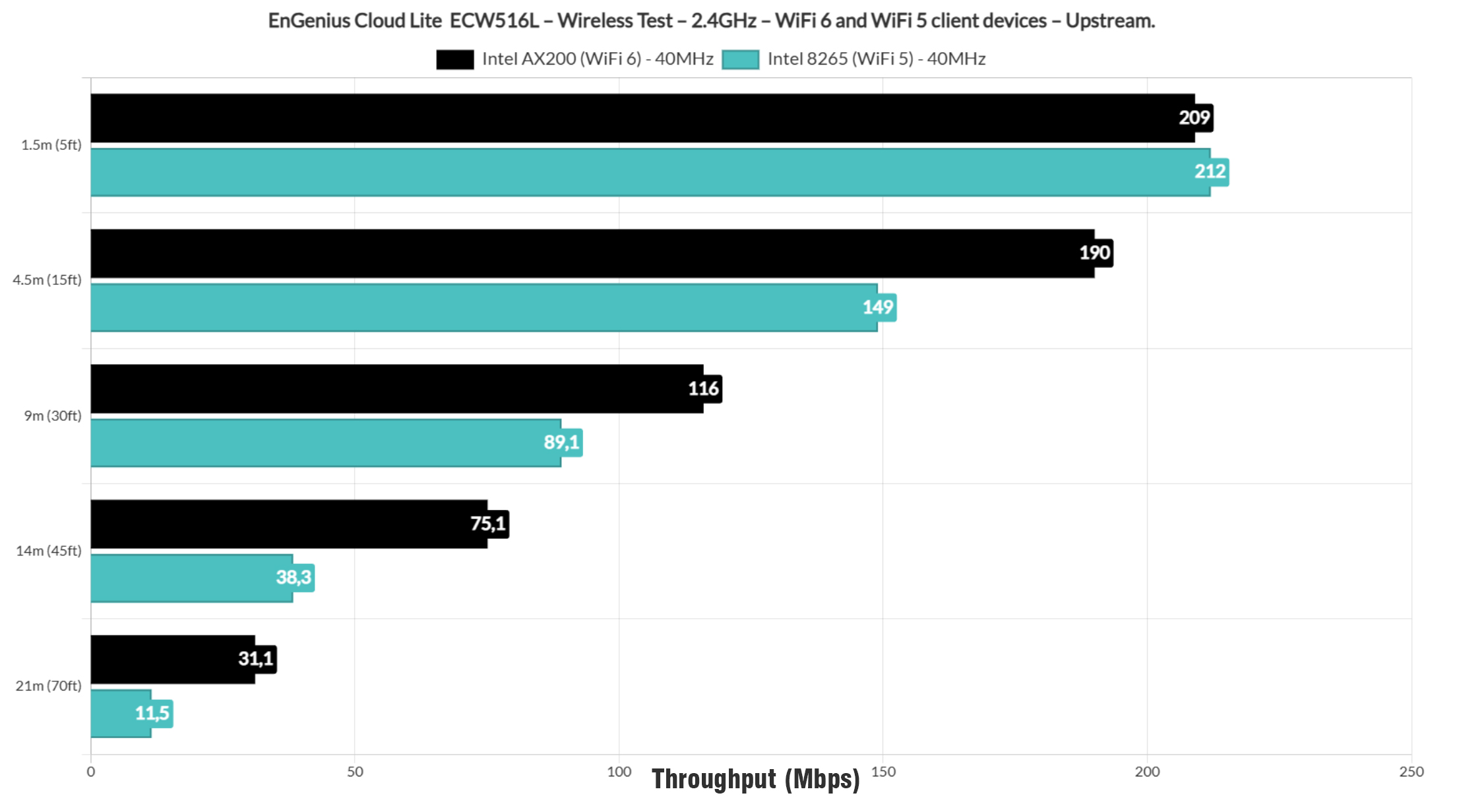
If you want the downstream values as well, comment below, otherwise I will assume it’s enough. I have also included the signal attenuation graphic since it’s more important that the distance-based values.
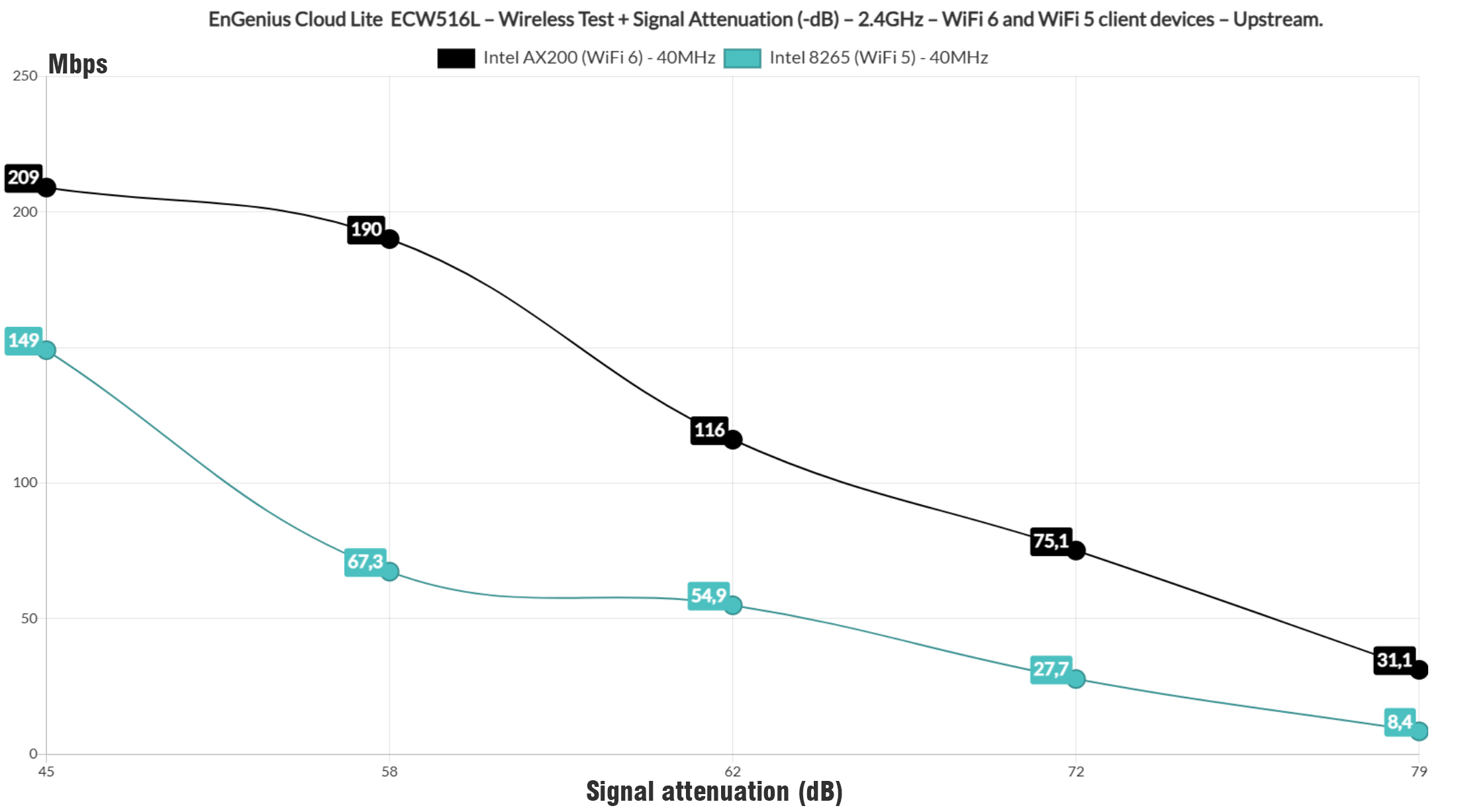
This is how you can actually reproduce my performance. And lastly, I put the EnGenius ECW516L against other access points once more and it sits below the EAP773 which is fair, but not really impressive.
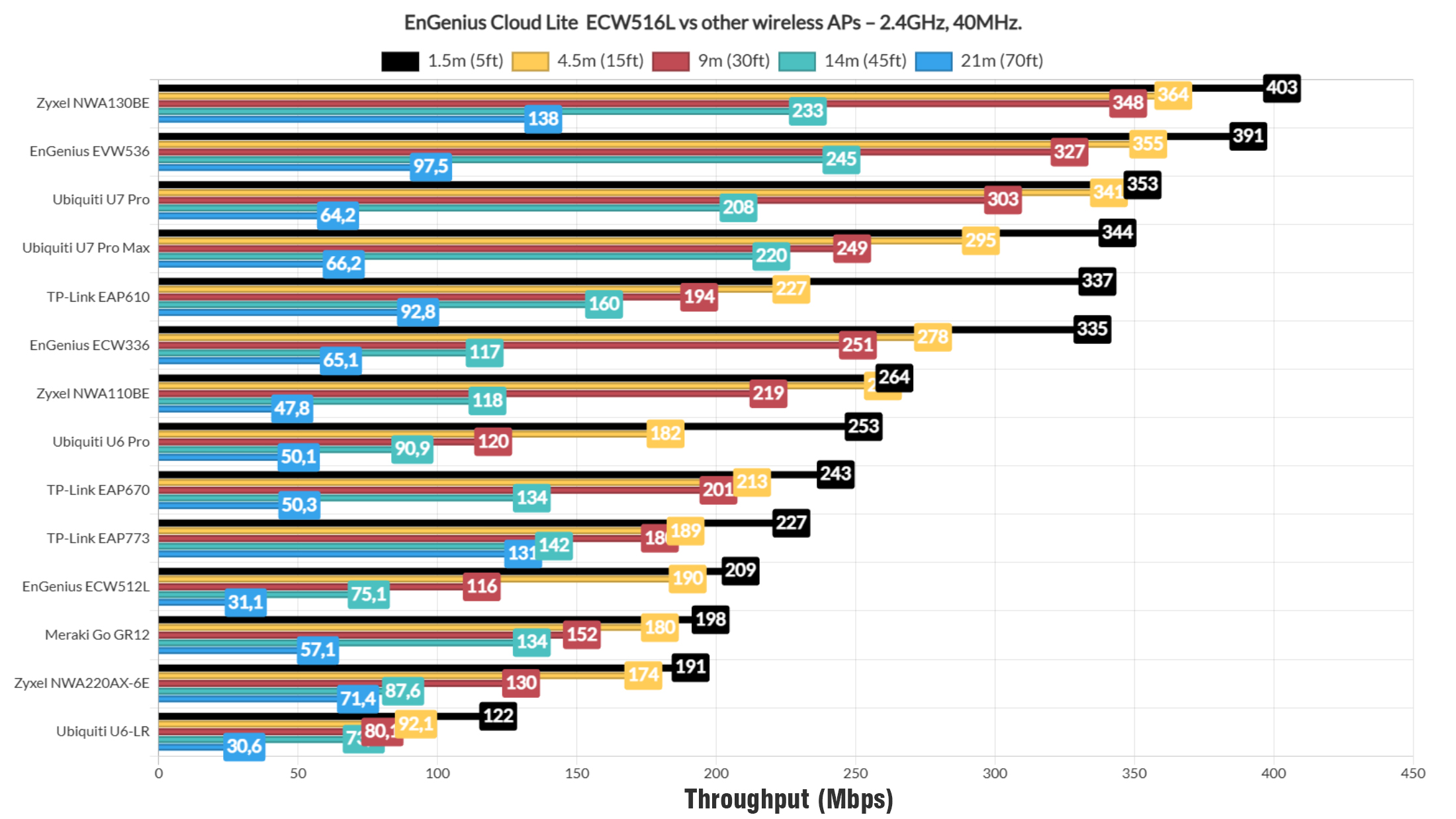
The Multi-Client Tests
Let’s now move on to the multi-client test results and, as before I used net-hydra developed by Mr Jim Salter. I used the same client devices as with other access points to help the comparison between models easier. It would have been better to have identical client devices, but costs would be too high to make it worth it.
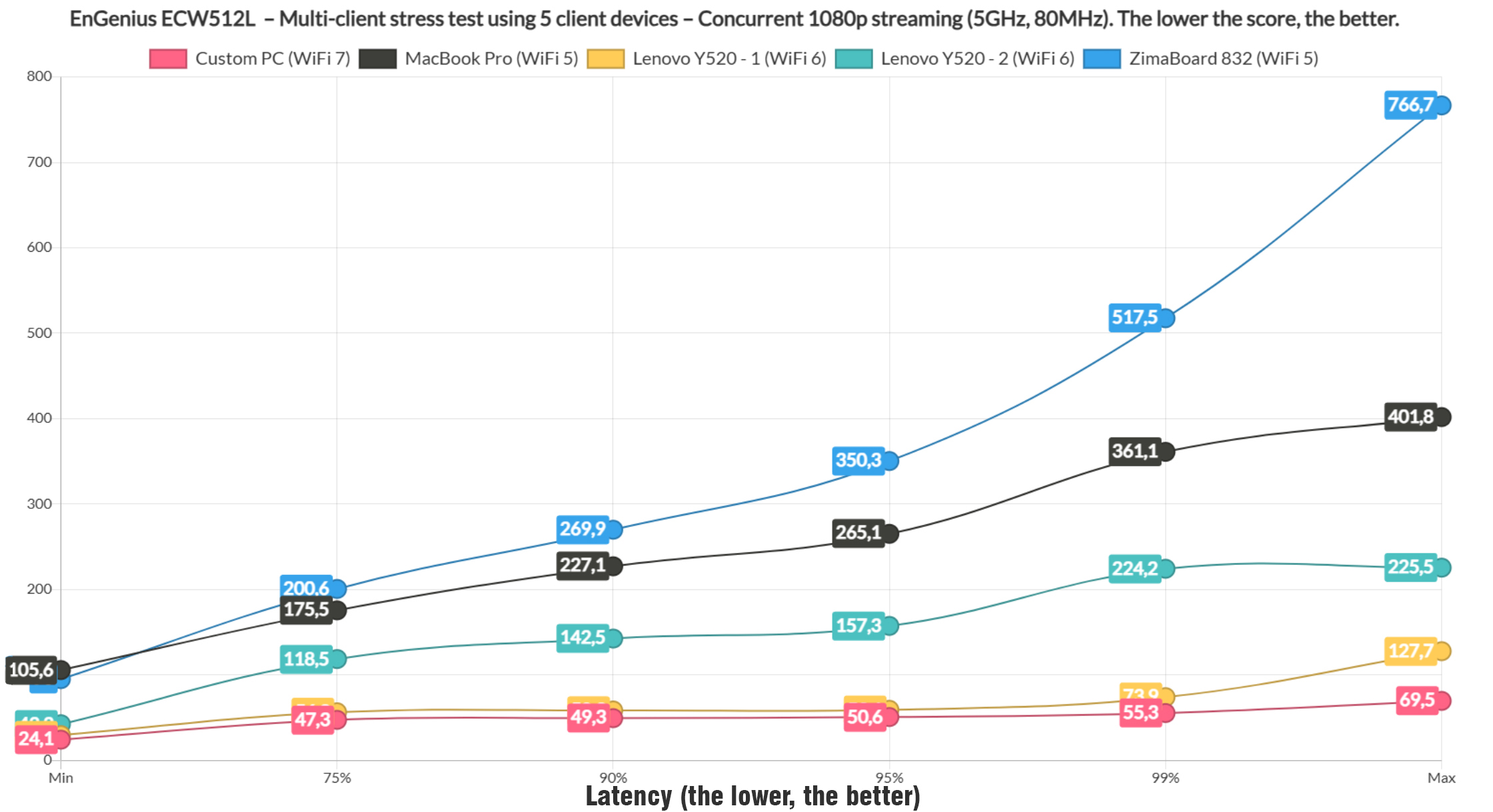
I started with the concurrent 1080p streaming traffic and two clients did well, the WiFi 7 one and one of the two WiFi 6 laptops. The rest rose too high and did not provide a usable latency.
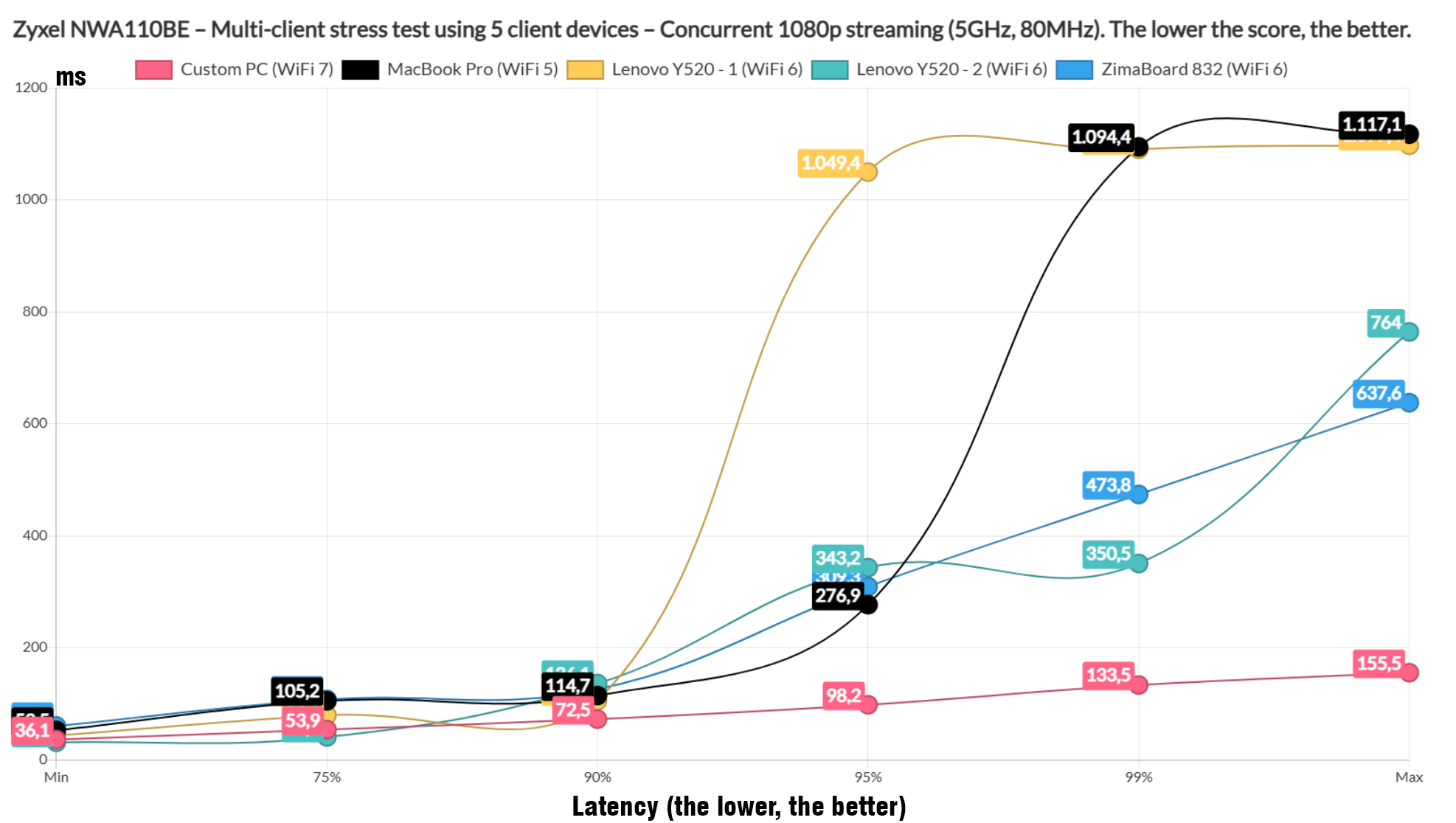
Then again, it did better than the NWA110BE. Next, I ran 4K streaming traffic on the five client devices and the latency was more than 100ms all the time regardless of the device, so not a good idea to run this type of traffic on five client devices.
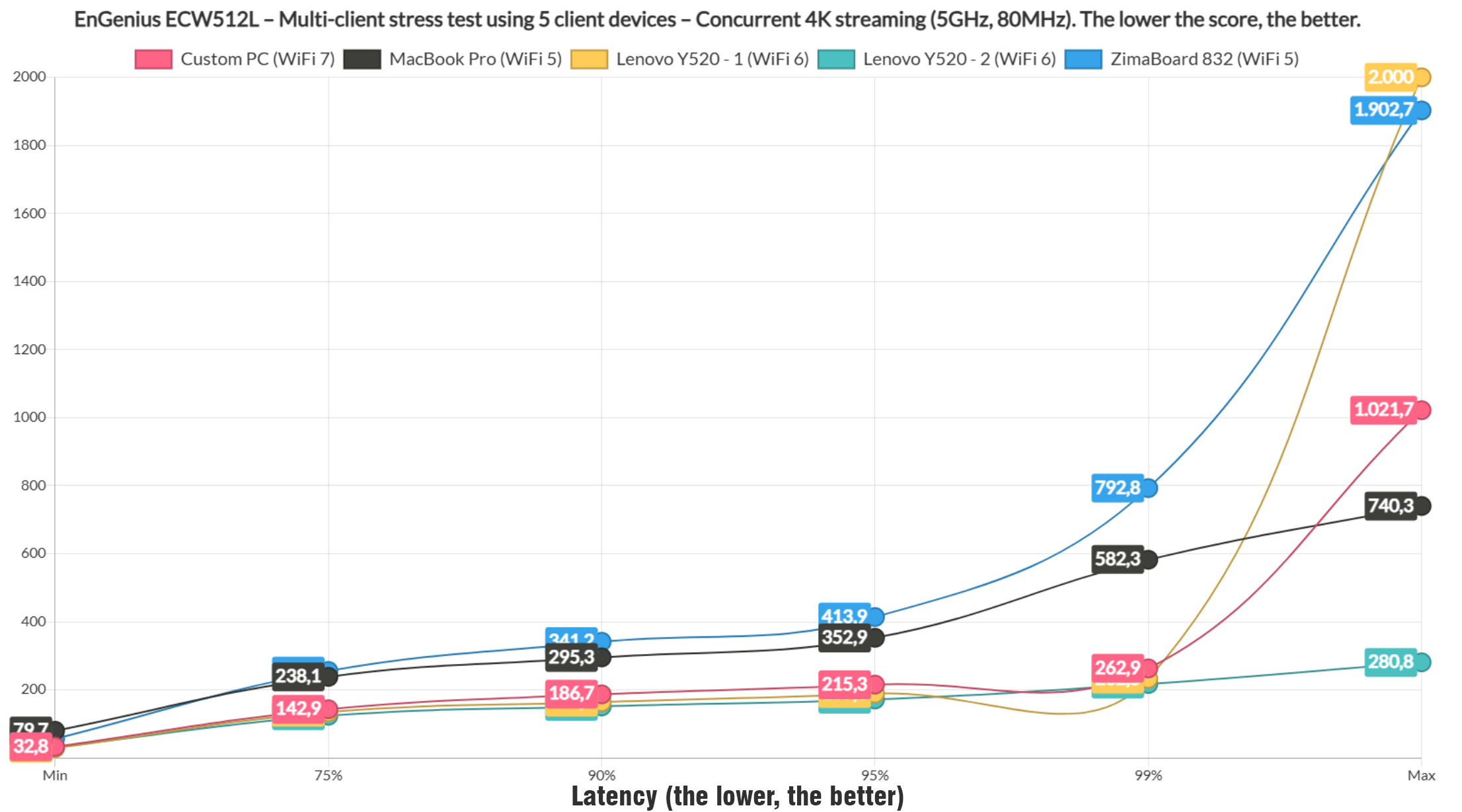
As a comparison, the NWA110BE did a bit better here.
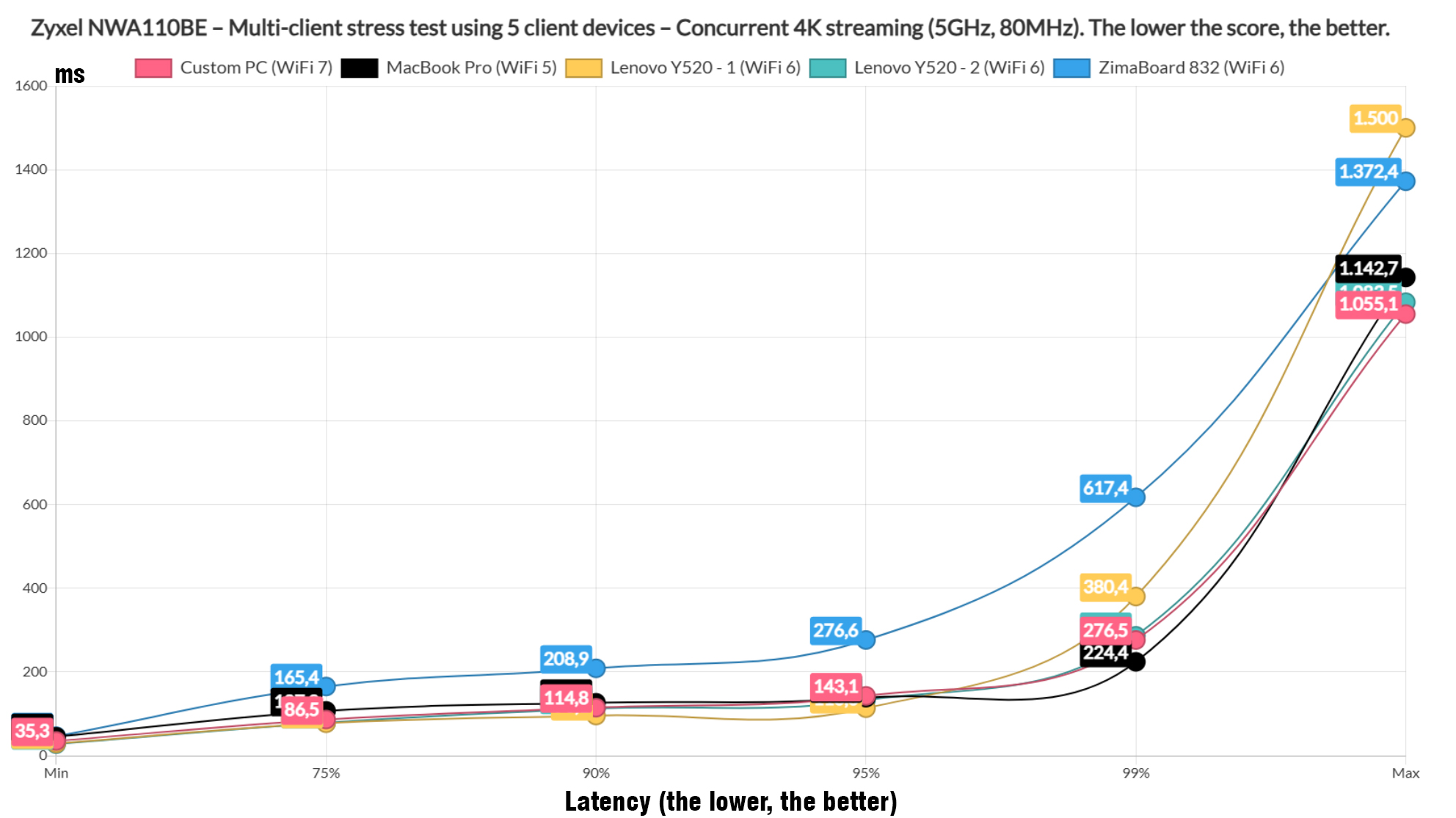
Moving forward, I kept the 1080p streaming traffic and ran intense browsing alongside it. And again, we get to see two client devices doing better than the rest.
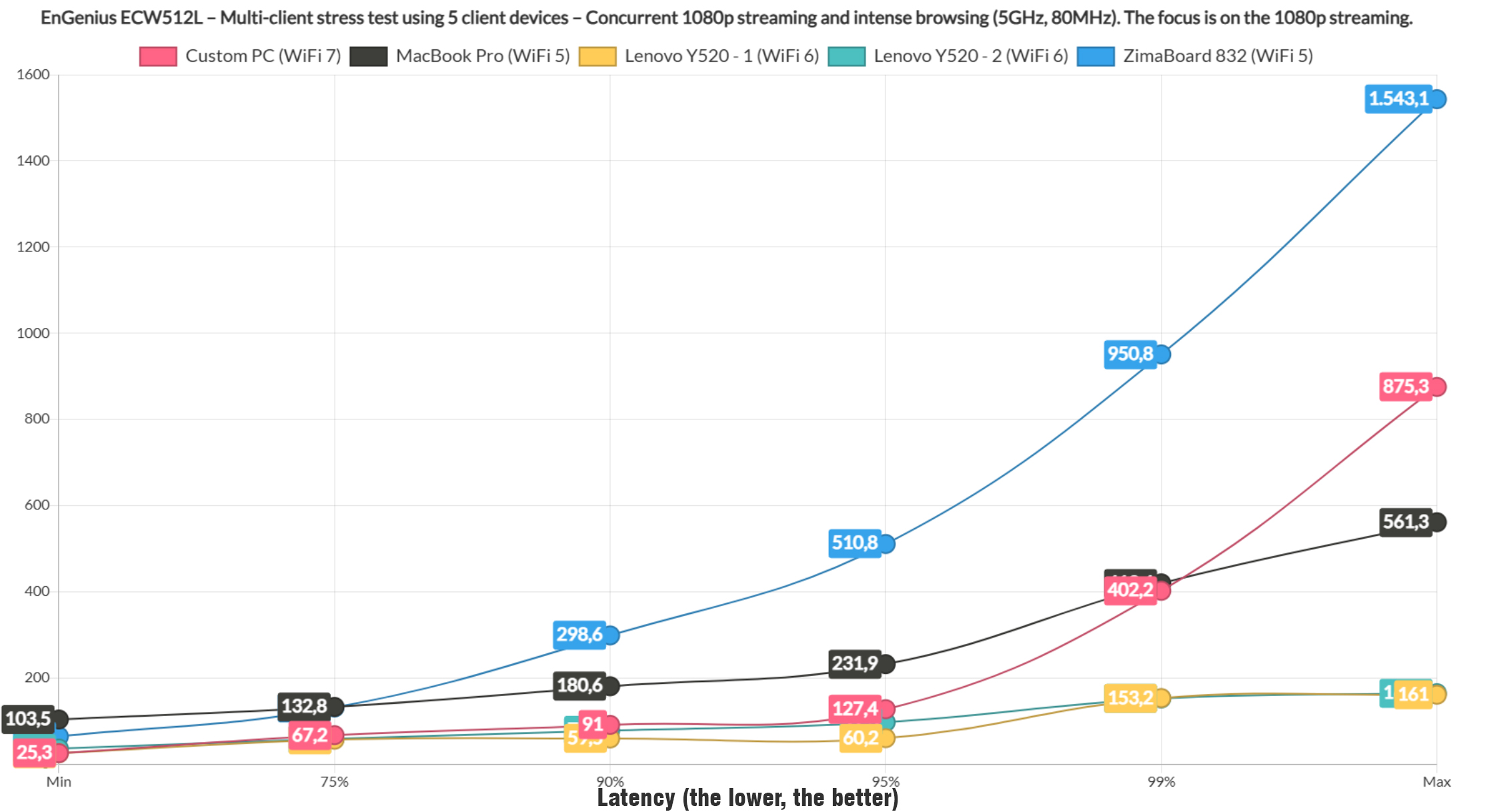
I also checked the intense browsing graph and all clients stood below 500ms for 95% of the time, but three did rise close to 1s for about 5% of the time. Still very much usable.
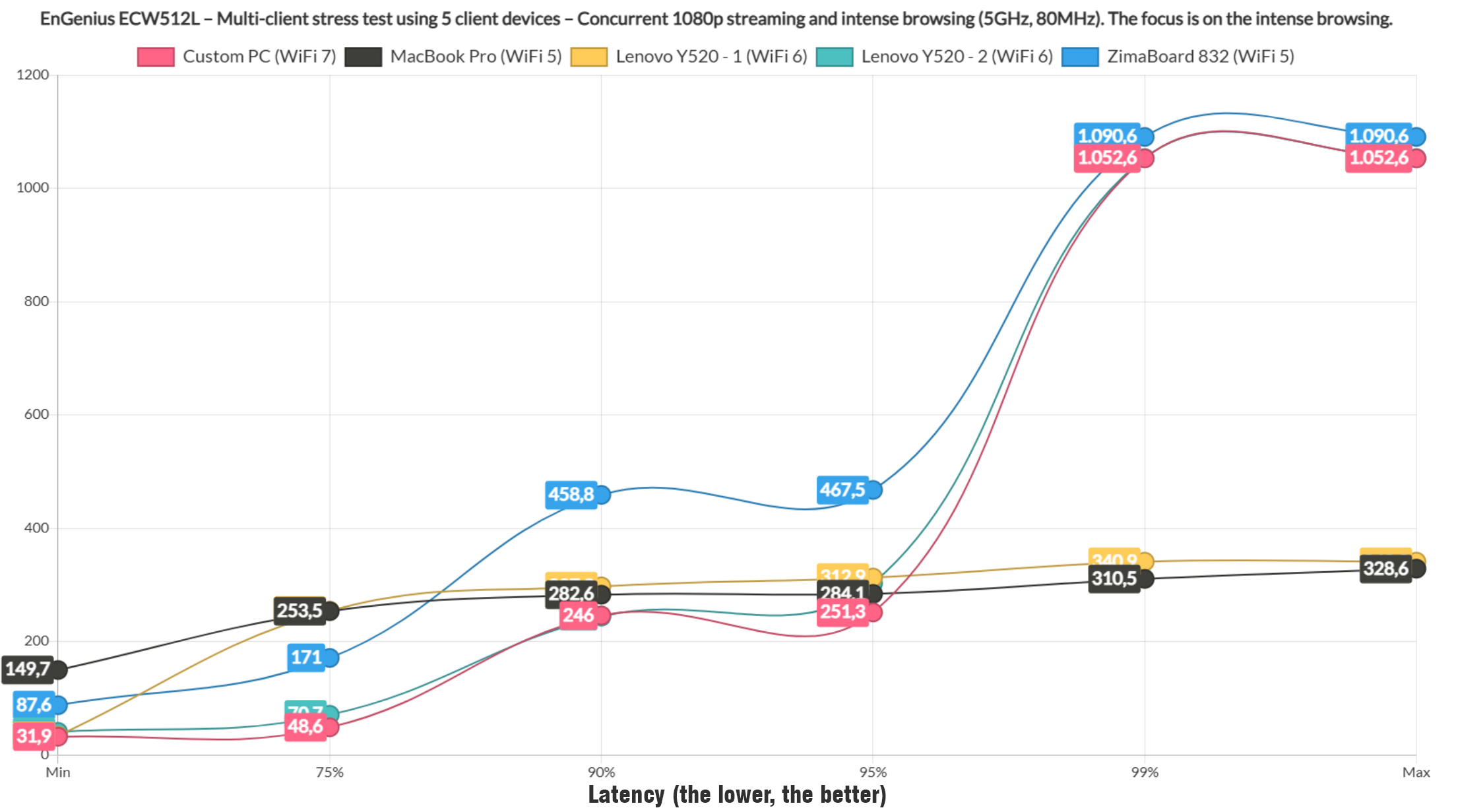
I also had to run intense browsing next to 4K streaming and the former didn’t have that much of an impact on the latter. Then again, the latency will still make things unusable.
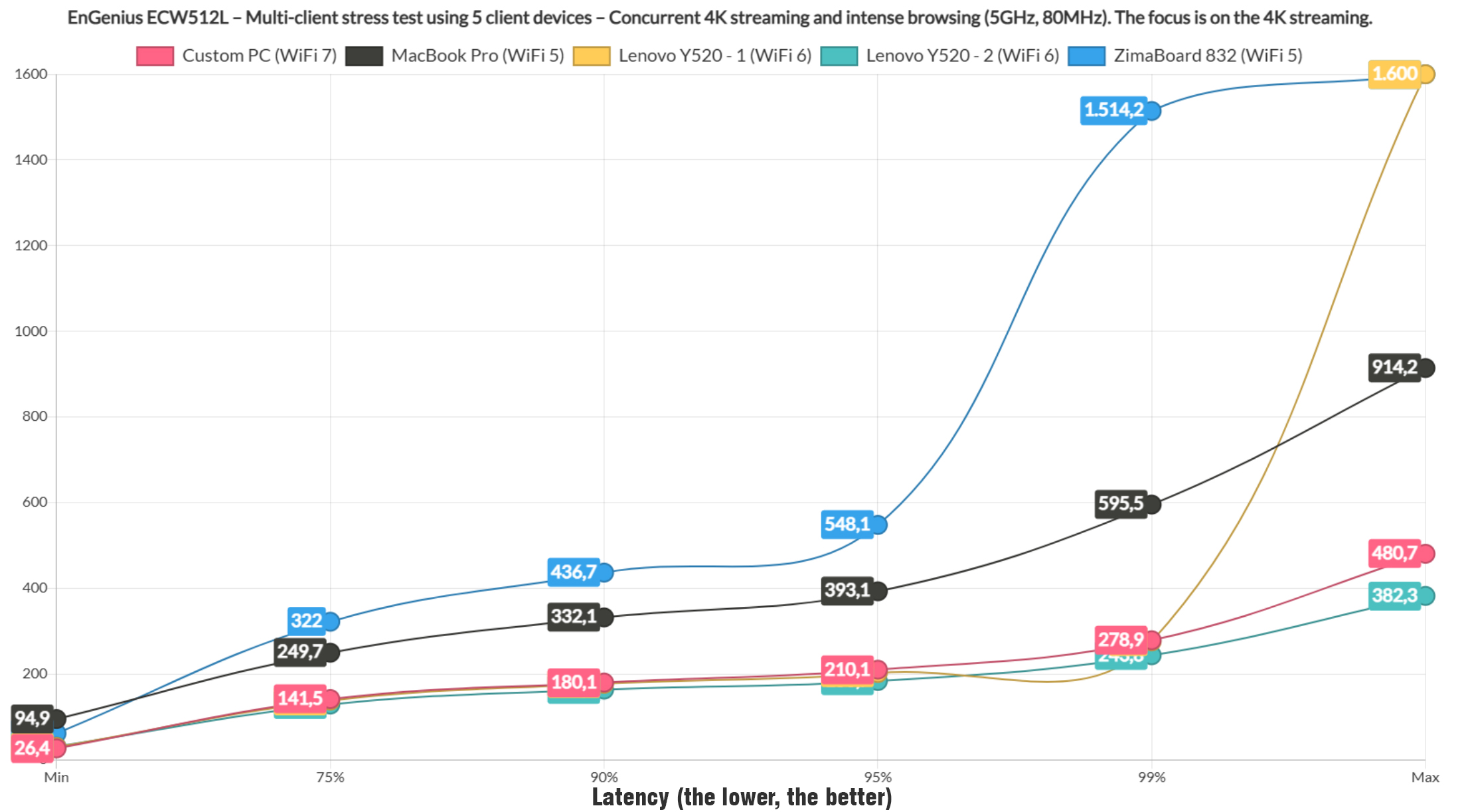
The intense browsing graph shows a tendency towards 1.3 seconds on two clients which was concerning, but the rest did alright.
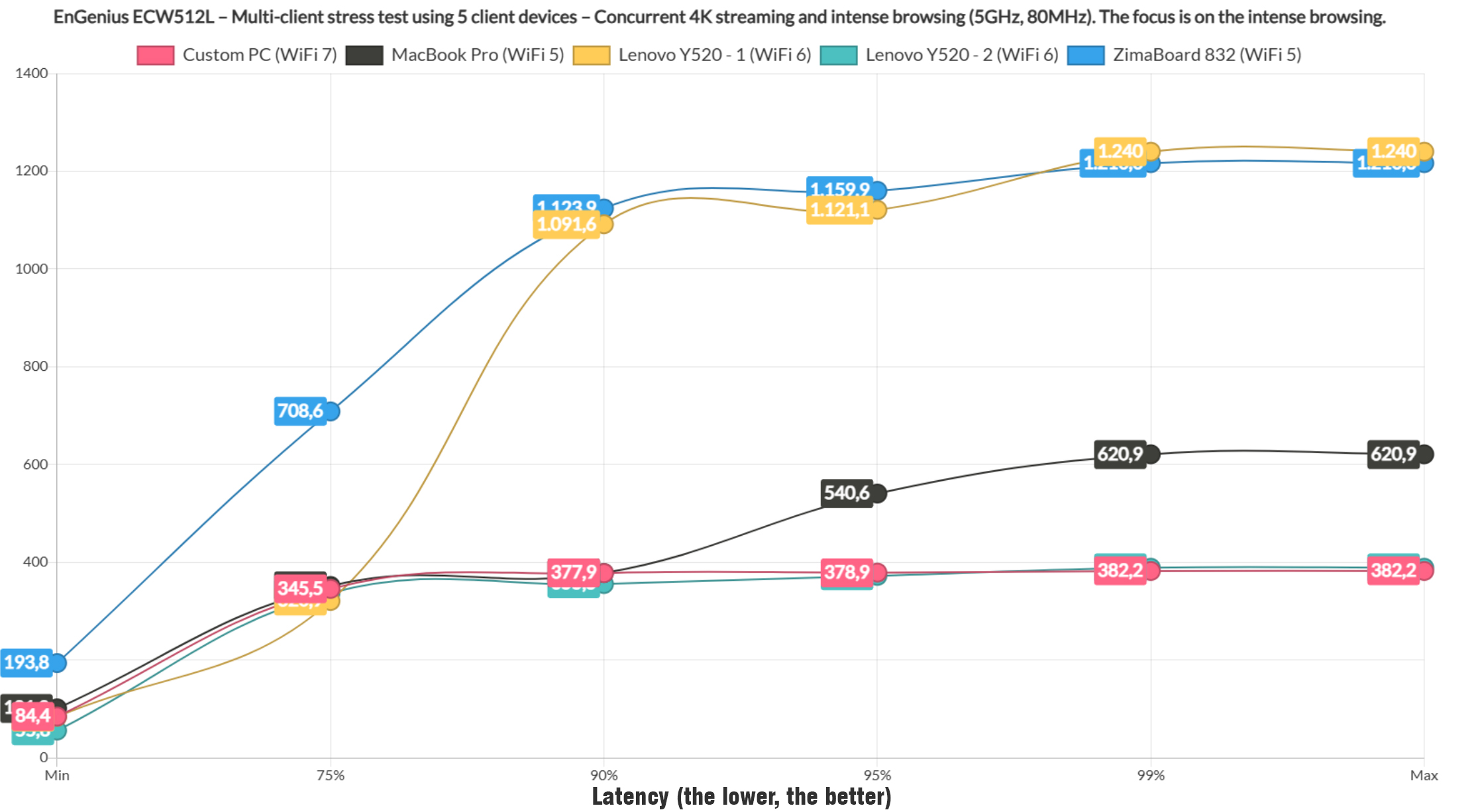
After that, I decided to leave out the ZimaBoard and run various types of traffic on the rest of the clients, and that does include downloading as well. The idea is to download a 10MB file continuously on a couple of clients. And the result is, well, as expected.

The two downloading clients quickly rose above 400ms and so did the 4K streaming client. The two intense browsing clients did OK. After checking the NWA110BE performance, it does seem like it did a bit better, although the latency is still too high for comfort.
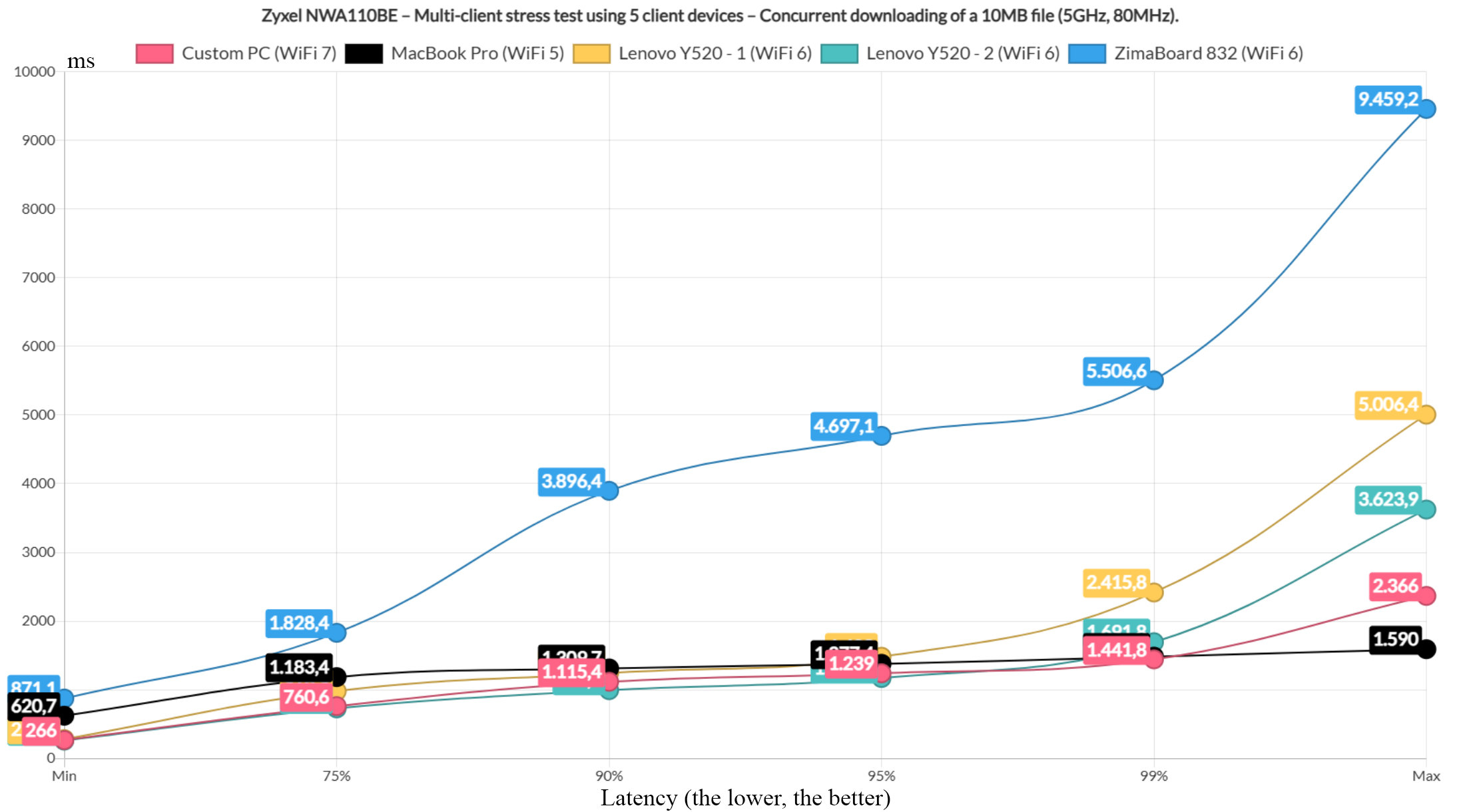
Next, I limited the downloading traffic to one client and the latency did get better, staying below 250ms for about 95% of the time and one 4K streaming client also stayed near 100ms which is better than before. But still pretty much unusable.
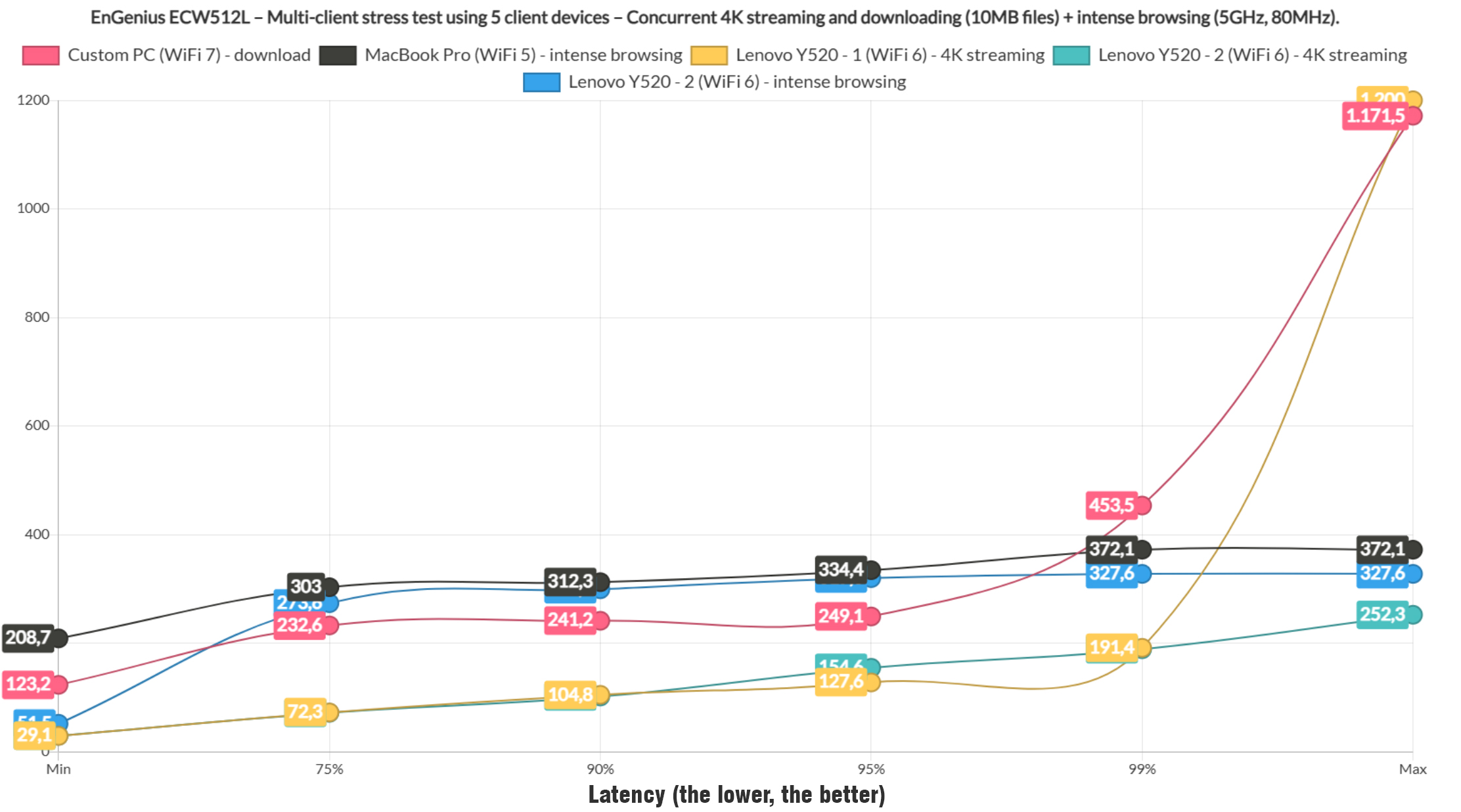
So we need to limit the client devices to three and see if that makes a difference. Strangely, it didn’t.
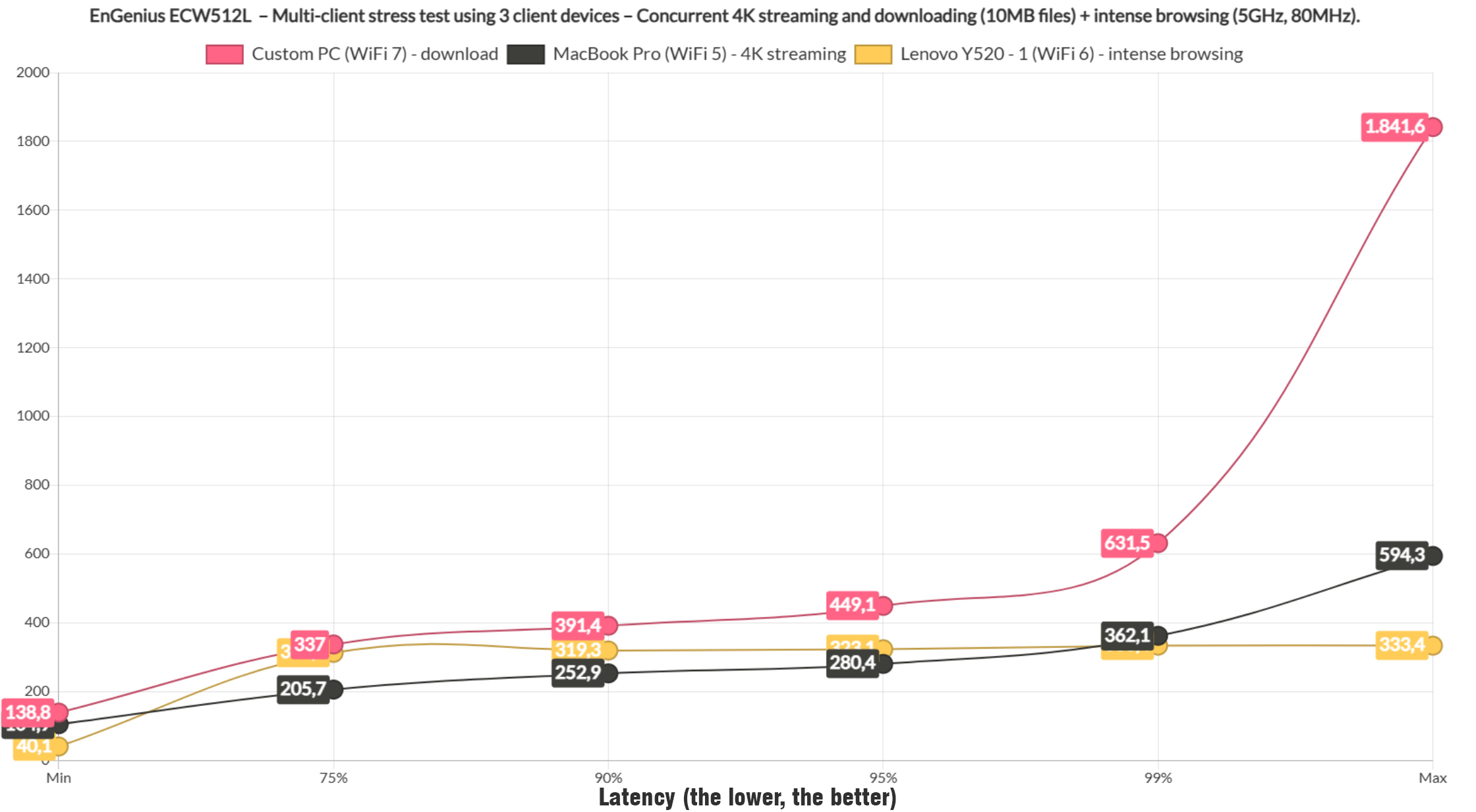
And I have seen something similar when I tested the Zyxel NWA110BE.
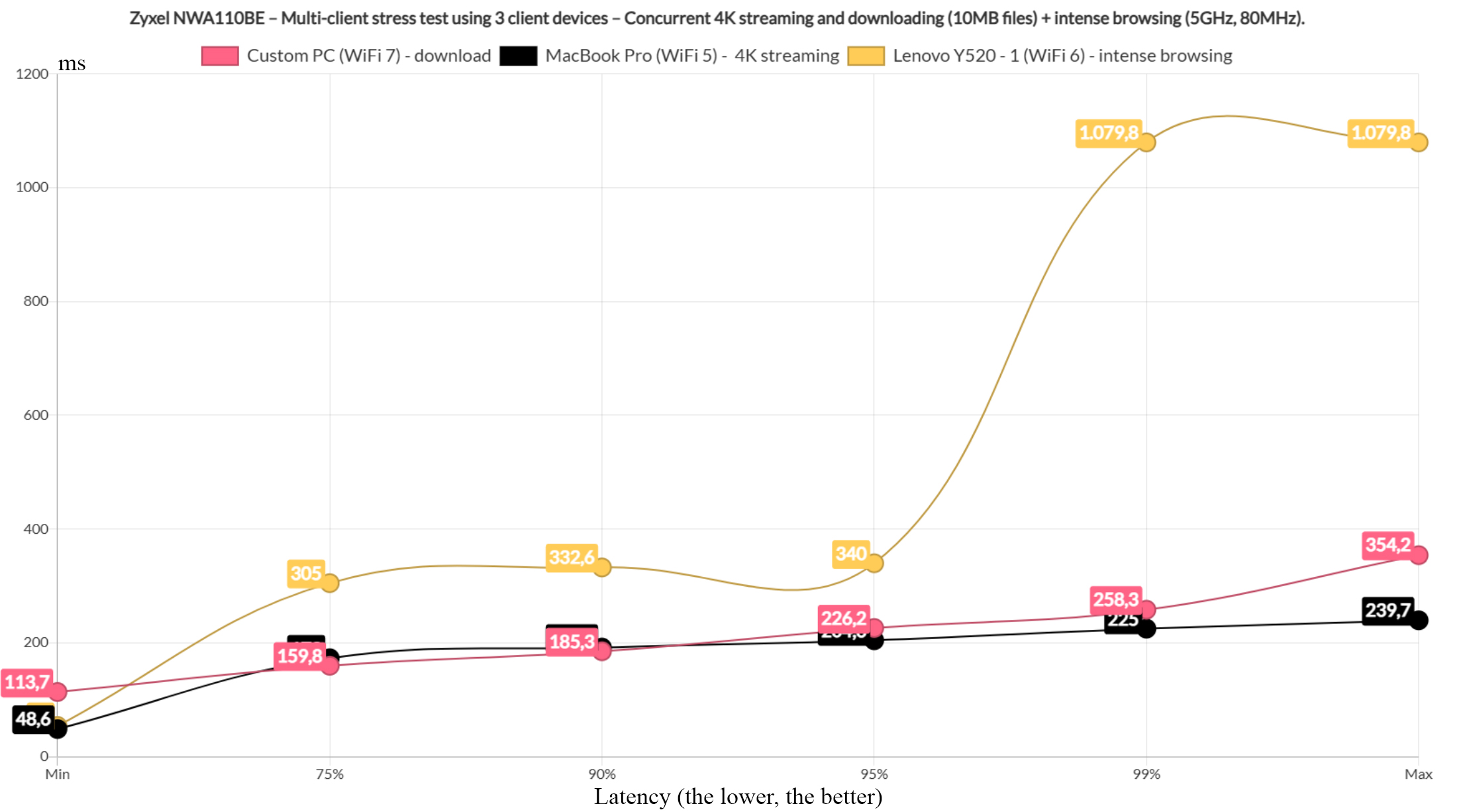
So, I decided to change the downloading file to 1MB. This did the trick and we can see a latency near 50ms across the board.
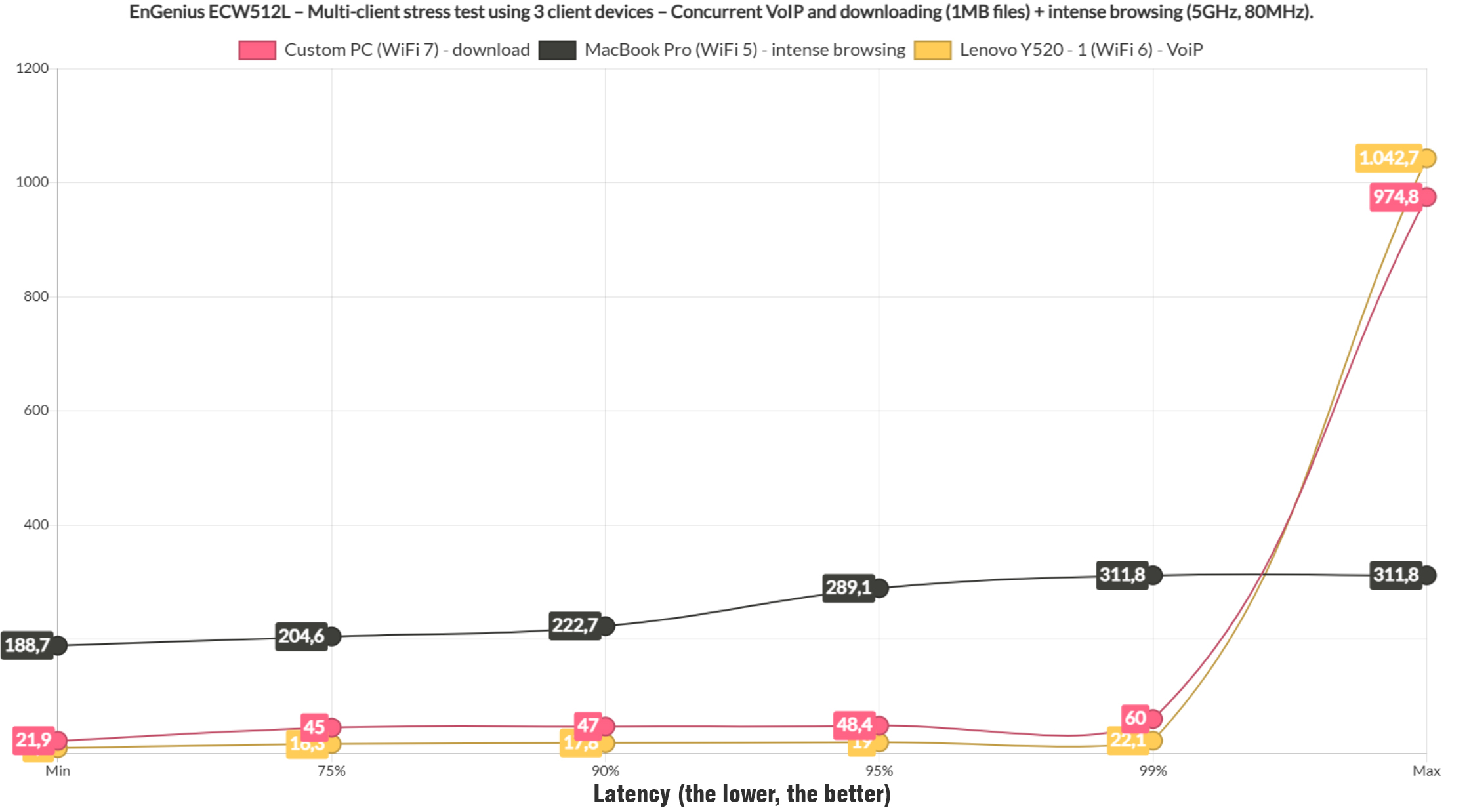
And I have also included VoIP traffic this time which was handled fairly well. Lastly, I had to download the 10MB file on all five client devices and you can see the result for yourself.
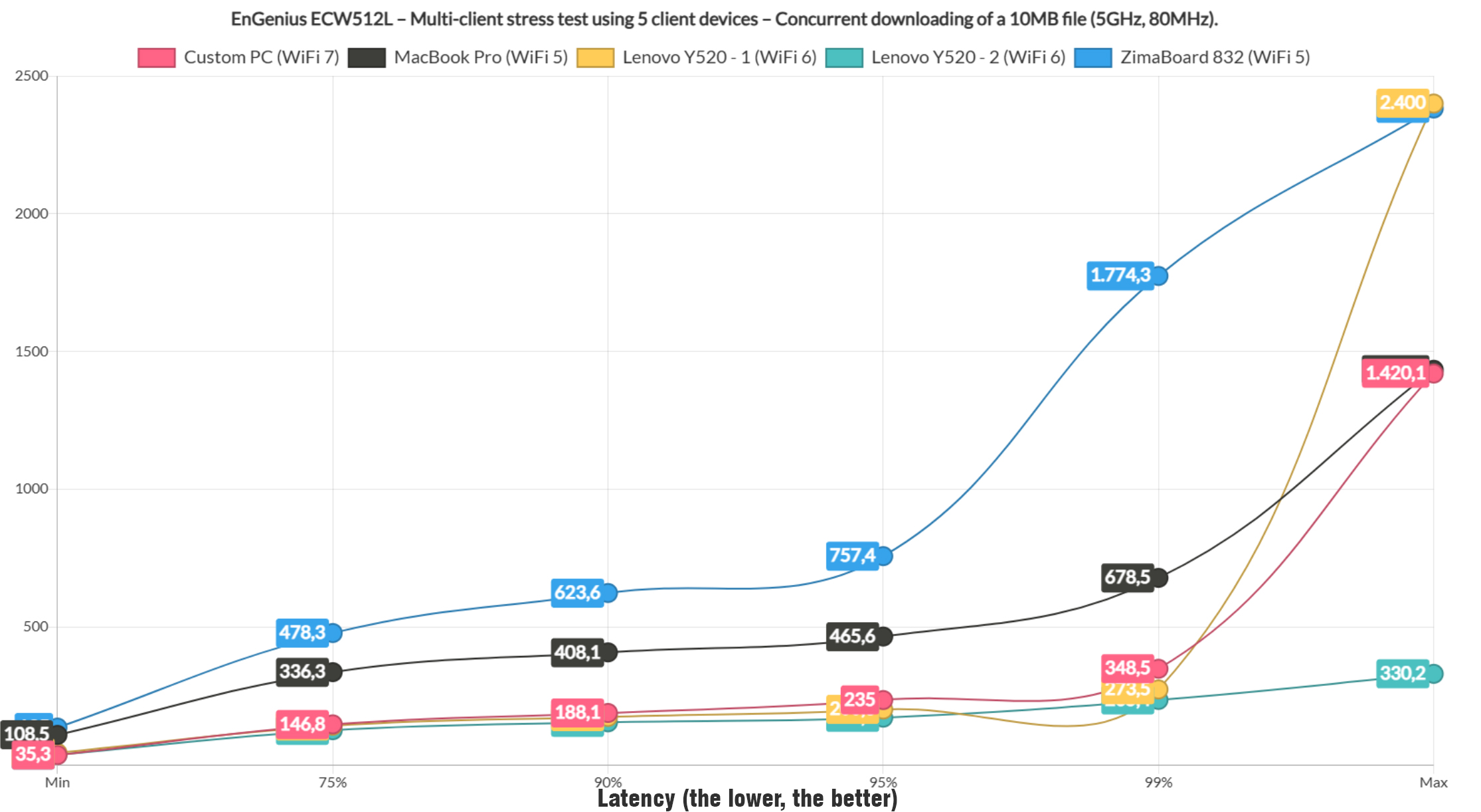
The MLO Performance
It’s very nice to see that MLO is a part of the entry-level access points considering how long it took to be made usable from both the client and the device level. Some WiFi 7 router manufacturers are still playing around, which is why a dedicated access point is almost always the better option. And it’s not that expensive either, you just need a switch and a gateway, both can be cheaper. Anyway, let’s check out the MLO performance of the EnGenius ECW516L.
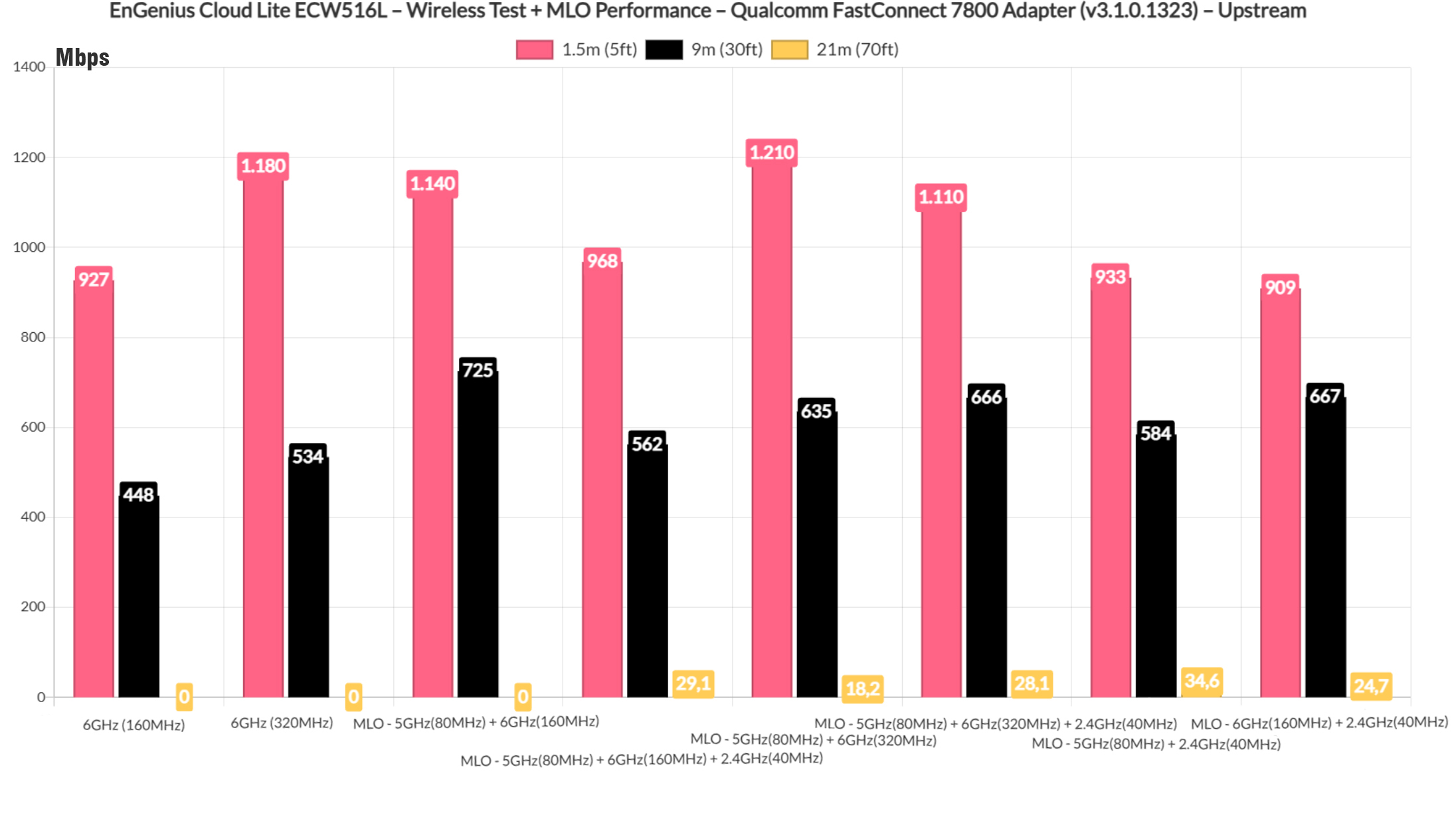
I suppose it’s not a major gain near the access point, but, considering that we initially got 0Mbps at the farthest point, we do now get to go farther away with the client. And that’s true both upstream and downstream.
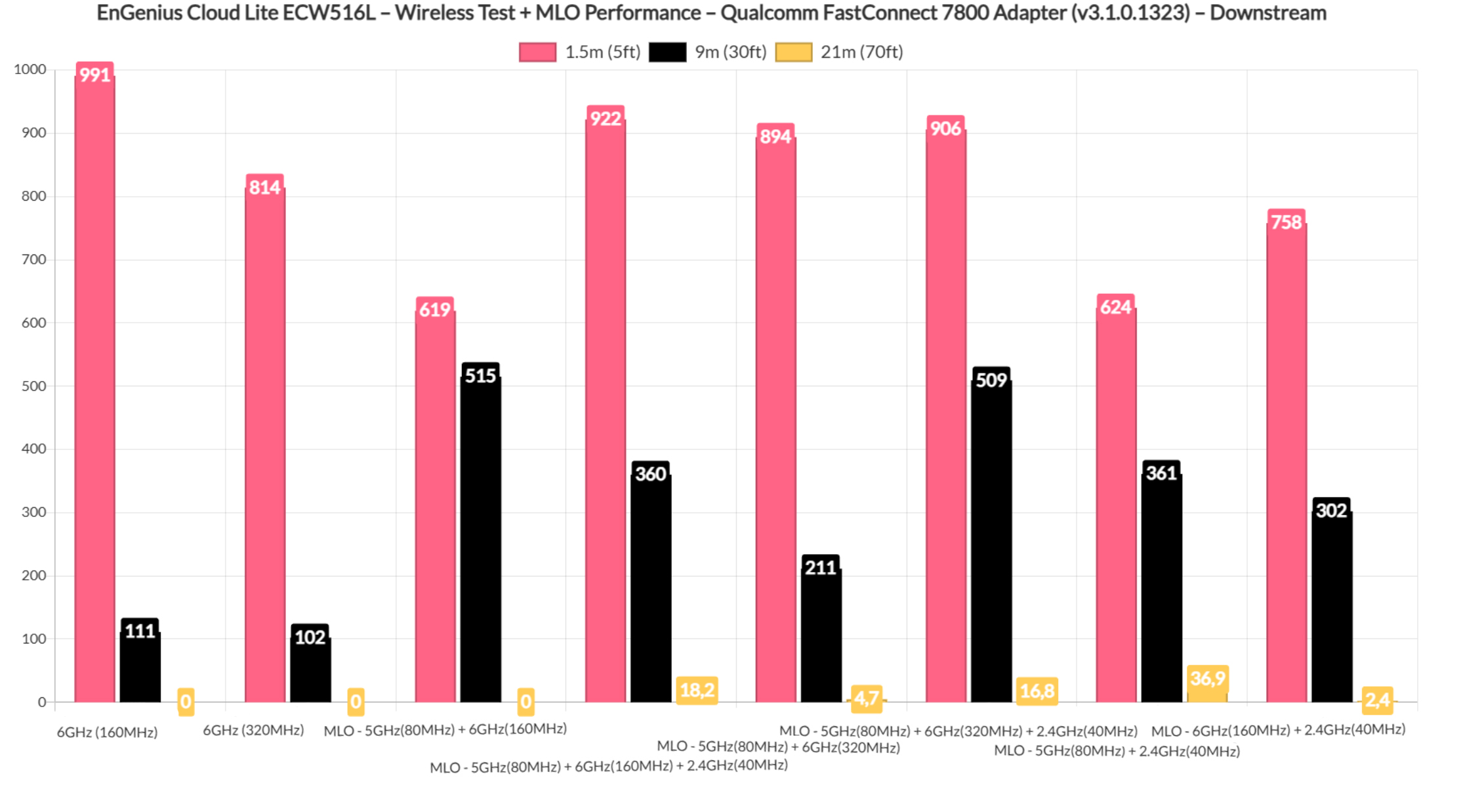
I have also ran some FLENT tests, nothing special, the default ones and I have included here the results.
Sure, the NWA110BE had fewer configurations available, but I still think the ECW512L performed erratically in some of these graphics.
The Standalone Mode
There isn’t much o explore when it comes to the stand-alone mode of the EnGenius ECW516L. Sure, it’s there, but it is very limited in terms of both monitoring reach and especially the available configuration.
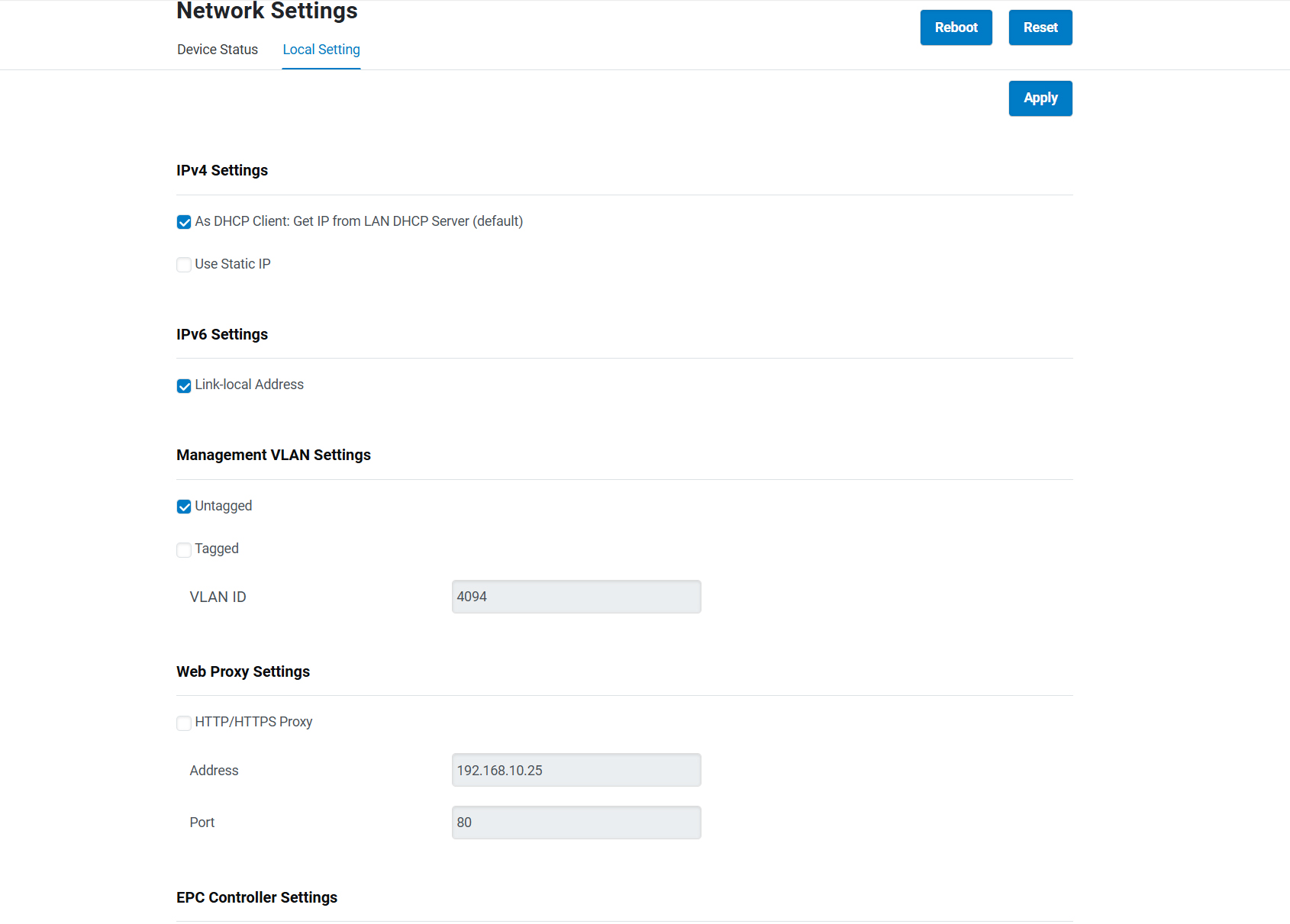
I don’t know for how long EnGenius intends to support this model, but if it’s out of the Cloud platform, then you won’t be able to configure it that much in depth.
The Cloud Platform
And that takes us to the EnGenius Cloud platform. The process of adding the access point to the network is pretty much the standard across SMB and above networking devices. And then we get access to the Dashboard where we can see various status information about the ECW516L and any other EnGenius devices that a part of the network.
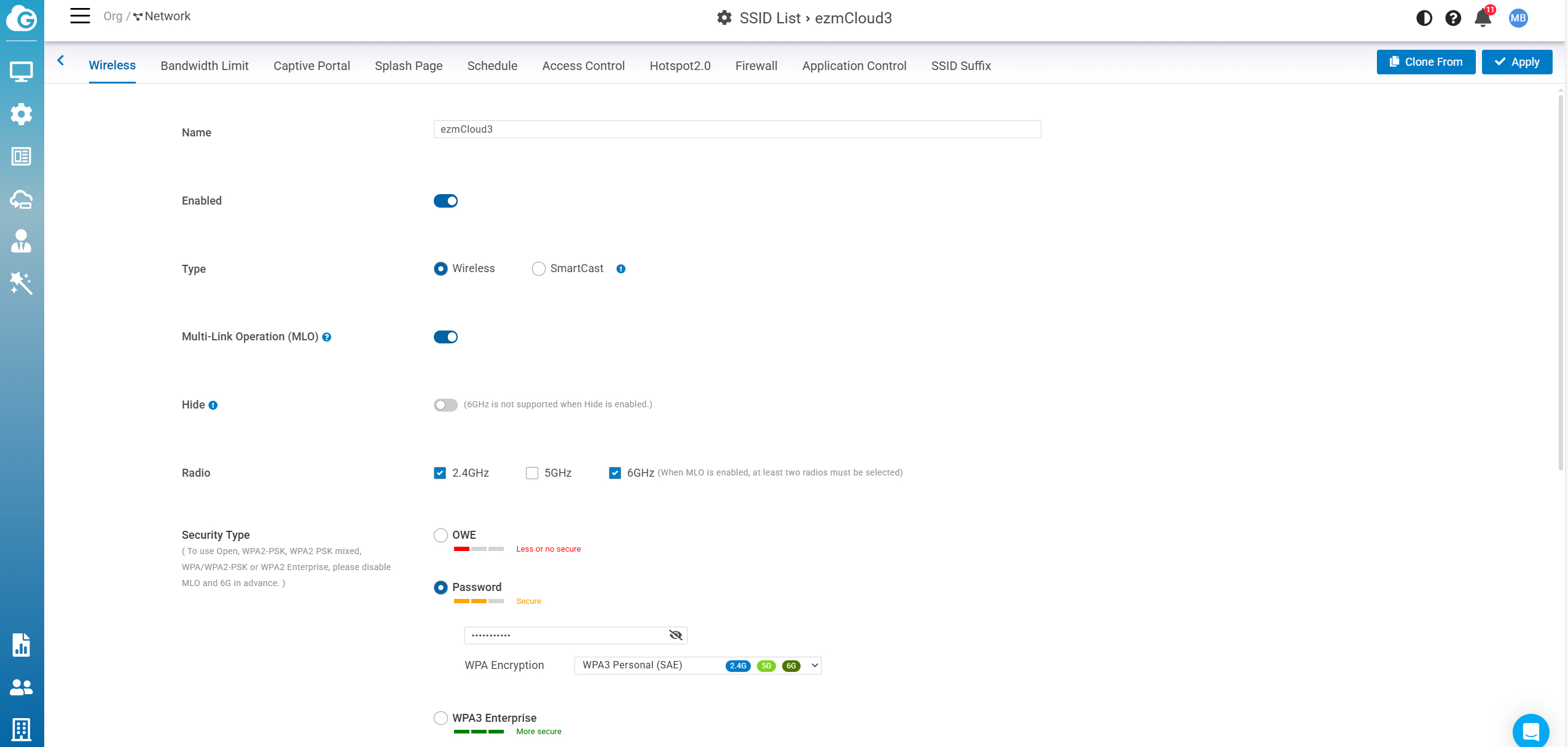
Going to Access Points and selecting the AP, we can see dedicated status info and we can do some configuration changes that will override the adopted settings. It’s also possible to check out the Diag Tools which, by default include Network Activities and the All Channel Utilization. The Live Clients become available when using the Pro subscription.
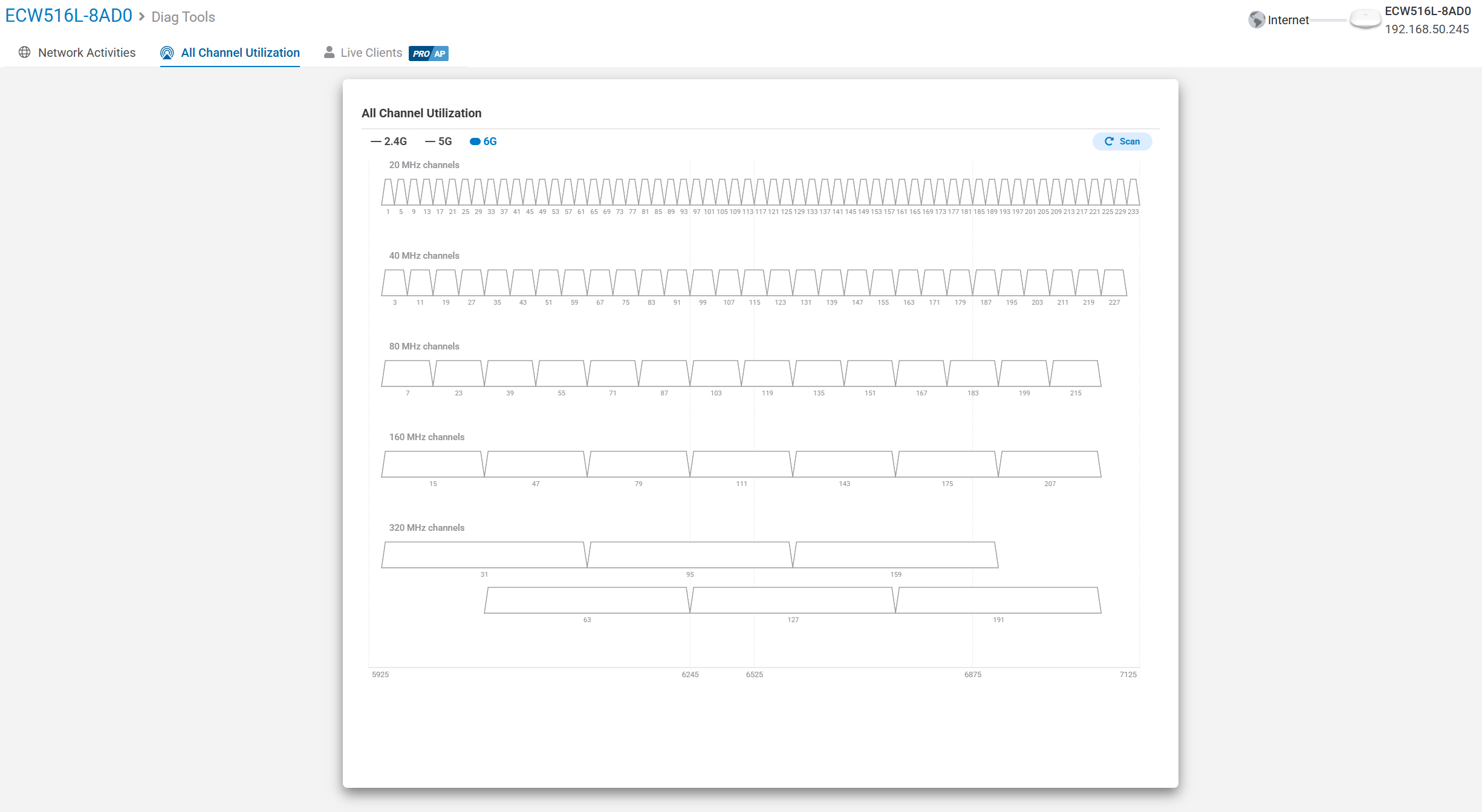
It’s also worth mentioning the SSID List where we can change how the Wireless performs, including enabling MLO. There’s also a Captive Portal, Access Control, SPlash Page, Hotspot 2.0 and Firewall. We can also make changes to the Radios, where the settings are universal for all access points adopted within the network.
The Conclusion
It’s nice to see that EnGenius offers an affordable WiFi 7 access point that offers the 6GHz radio alongside 5GHz and 2.4GHz (unlike the NWA110BE), as well as MLO. The price tag does mean that the hardware is less potent, so a few software features will be missing from the Cloud platform. Plus the wireless performance was fair for a smaller network, but again, it’s not really a champion at either speed or coverage. It’s a fair device offering quite a few advanced features at an affordable price.
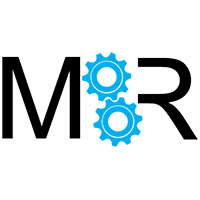
Mark is a graduate in Computer Science, having gathered valuable experience over the years working in IT as a programmer. Mark is also the main tech writer for MBReviews.com, covering not only his passion, the networking devices, but also other cool electronic gadgets that you may find useful for your every day life.


